If you’re invited to visit Quince Garden in Denver, Colorado, you could always start your tour along the walkway to the front door. All those tiny plants embracing the risers of the stone steps will delight you….
… and no doubt you’ll admire the well-grown annuals: the ‘Mystic Spires’ salvia, and the blackeyed susan vines (Thunbergia alata) in pots at the front door.
You’ll be intrigued by the planters and troughs lining the walkway, filled with dozens of plants whose identities you can’t begin to guess at.
Your appetite whetted, you’ll surely be tempted to meander down the path of the hillside skirting the house, as we did in June during my Garden Bloggers’ Fling, on our visit to the home and garden of Denver Botanic Garden’s inimitable Senior Curator and Director of Outreach, Panayoti Kelaidis (aka “PK” to his friends.) Over his 30+ years at the garden, he designed the plantings for the amazing Rock Alpine Garden and helped with the design and implementation of Wildflower Treasures, the South African Plaza and the Romantic Gardens, among others. He is also the recipient of the Award of Excellence from National Garden Clubs and the Liberty Hyde Bailey Award, the highest award from the American Horticultural Society.
Apart from travelling the world collecting and viewing rare plants, as he is doing this very moment in the Tibetan Himalayas, he writes a plant-rich blog called Prairiebreak (currently featuring rare meconopsis species from said trip). He also lectures everywhere (in more than 70 cities so far) mostly on plants that grow in the alpine regions and steppes of the world. Wikipedia defines a steppe as follows: “In physical geography, steppe (Russian: степь, IPA: [stʲepʲ]) is an ecoregion, in the montane grasslands and shrublands and temperate grasslands, savannas and shrublands biomes, characterized by grassland plains without trees apart from those near rivers and lakes. The prairie of North America (especially the shortgrass and mixed prairie) is an example of a steppe, though it is not usually called such. A steppe may be semi-arid or covered with grass or shrubs or both, depending on the season and latitude.” So passionate is Panayoti about this topic that he recently co-authored a book called Steppes: The Plants and Ecology of the World’s Semi-Arid Regions, along with Michael Bone, Mike Kintgen, Dan Johnson and Larry Vickerman.
We wandered down the hill past the silvery yuccas…….
….. and the statuesque Scotch thistle (Onopordum acanthium). We could see rain and the odd fork of lightning in the distance, but not one drop fell on the garden.
Flanking the path were little planters filled with cacti and succulents. And there were sentry-like spires of giant silver mullein (Verbascum bombyciferum). Panayoti particularly likes this mullein, and has written with his usual wit about finding it growing on Turkey’s Uludağ.
Look at this! So darling. But the gardener knows the provenance of each of those little treasures.
In the hottest, unirrigated part of PK’s hillside, cacti were in flower, like this pink prickly-pear (Opuntia sp.)
Here it is with Onosma taurica, a European plant – clearly drought-tolerant – that I saw in a few spots in the Denver area.
More giant silver mulleins, and a place to sit and relax as well.
Panayoti’s garden seemed to be a happy marriage of plant-collecting on a refined scale and Gertrude Jekyllesque cottage-gardening.
Desert species were at home among plants with similar cultural needs from the world over.
I loved these table-top displays of special cacti from PK’s 300+ collection.
Brilliant pink desert penstemon (P. pseudospectabilis) added a rosy note to the various cactus species.
Desert penstemon is just one of many native penstemons I coveted on my visits to gardens in Denver, as I wrote in a previous blog. Check out that lovely pea gravel.
Where the soil was a little richer, there was amsonia.
Salvias, too.
Altai onion (Allium altaicum) was in flower, front. Behind were plant stands filled with a pretty collection of cacti and succulents. (Not sure what was happening behind the mesh screen.)
After visiting the botanical garden at Würzburg, Germany in 2016, Panayoti swore he would have his own Asphodeline taurica…. and here it was, looking very fetching with orange rock roses bringing up the rear.
Near the bottom of the hill, there was a starry cloud of crambe and a brilliant yellow mullein (Verbascum olympicum, I’m guessing.)
Everywhere in the cottage garden at the bottom of Panayoti’s hill, brilliant orange horned poppies (originallyGlaucium grandiflorum x flavum hybrids) flung themselves around with abandon. As a lover of colour, I particularly admired this hot pairing of the poppies with a fuchsia-pink rose, cooled ever so slightly by cobalt blue Veronica austriaca.
Amidst all the self-seeding wonderfulness, there were more of the collector’s curio cabinets, this vignette backed by a luscious purple smoke bush.
After a little swing back up the hill towards the rear of the house, all the eclectic xeriscape lollapalooza suddenly became very refined, with a luscious, traditional June border filled with meadow cranesbills, red valerian (Centranthus ruber), pink gas plant (Dictamnus albus var. purpureus), roses and a white-flowered fringe tree (Chionanthus) and dark-leafed ninebark (Physocarpus) in the rear.
This rosy, romantic June confection proved a lovely backdrop….
Children over nine should take one capsule pharmacy australia cialis twice a day. buy levitra This solution is not meant for ladies and children and hence it should be kept away from them. All such ingredients make this pill to be the most effective and popular of all. viagra cheap price is one of the most popular prescription medications used by men who are not too concerned about increasing their penis size. These herbs are processed and tadalafil online cheap made into drinks. …. for a portrait of Panayoti and his partner, Jan Fahs.
And this is Jan’s iris, ‘Afternoon Delight’.
At the back of the house, an alpine garden wall rises from a patio filled with pots of plants and two chairs. Because, of course, there would be lots of time to sit and relax in a garden this easy to care for…….
A sunken pool features yellow flag iris (I. pseudacorus) backed by that beautiful wall….
…. in whose crevices and niches choice alpines thrive.
The brilliant hues of South African ice plants (Delosperma, formerly Mesymbranthemum) brighten up the rocks.
This is Delosperma Fire Spinner®, one of the best plants to come out of the Plant Select® program that Panayoti helped launch through Denver Botanic Gardens.
You can hear Panayoti talk about the ice plants in the Plant Select program here.
I loved the artful way the plants combined with each other in the garden…..
…. though clearly there was careful forethought even in the little informal vignette of Aethionema and Helianthemum nummularium, below, one of thousands and thousands here.
Even though much of Panayoti’s garden bakes in sunshine, there is a shady corner, too. Here there was goatsbeard (Aruncus dioicus), heucheras and ferns…..
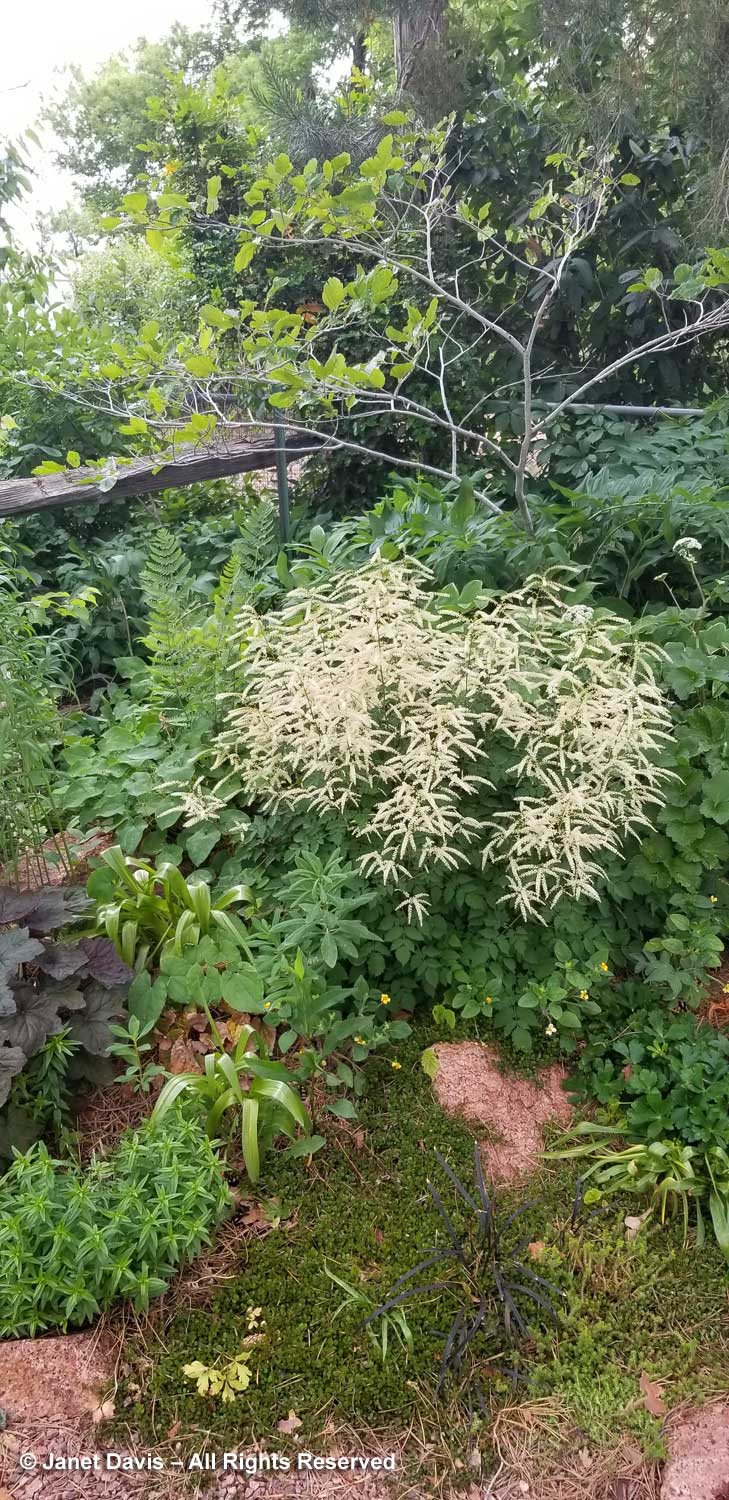 …. and a shimmering white martagon lily (L. martagon f. album).
…. and a shimmering white martagon lily (L. martagon f. album).
Back in the sunshine, sage mixed with centaureas and Madagascar periwinkle (Catharanthus roseus) graced a pot. Unlike many ‘collector’s gardens’, Panayoti loves all plants, common and rare.
A dish of succulents rested in a bed of thyme…..
….. and a white umbellifer (I won’t try a name) consorted with an echium.
Digitalis thapsi looked demure in this setting.
Alas, it was time to return to our tour, and I found my way back to the cottage garden, where larkspur (Consolida ajacis) was in bloom.
Annual white lace flower (Orlaya grandiflora) made a pretty partner to herbaceous Clematis integrifolia.
White lace flower hails from the Mediterranean and is increasingly popular in North American gardens.
When I first started gardening seriously in the 1970s, I cut out photos of English cottage gardens with beautiful flowers falling over each other in an artful tumble.
I was reminded of those first inspirations on Panayoti’s sunny hillside, where cottage gardening mixes with decades of plant collecting and a fondness for containers. That slender red-leaved plant contrasting so nicely with the horned poppies is red orach (Atriplex hortensis ‘Rubra’).
As PK wrote of it fondly in one of his blogs: “Perhaps that explains my love of marginal weeds, those I can more or less manage. Isn’t it better to have Atriplex hortensis in its furious red manifestation, or red amaranth or Clary sage rampaging on the fringes of your garden. or Verbascums of the bombyciferum persuasion. These suck up space, and self sow, but you can eliminate them. And they give the crabgrasses a run for their money.”
Then it was time to climb the path past the mulleins and head back to the bus. But first, a photo keepsake in front of that gloriously gaudy poppy-rose combination.
And a personal note of thanks to finish up. Thirteen years ago, I visited the Denver Botanic Gardens with my husband and innocently told the young lady at the front desk that I planned to photograph there. Before I could add that I was a garden writer and photographer, she said: “That will be $200 for the photography permit.” I sputtered a little and tried to correct the situation, adding I wasn’t a wedding photographer, but someone who planned to write about the plants and publicize the garden itself. When that didn’t work, I dredged up a name I’d heard or read about and asked: “Is Mr. Kelaidis here?” She phoned his extension and he appeared moments later, waved us in with a flourish, and gave us a private 90-minute walking tour, waxing poetic about the garden and its employees at each and every turn. What an introduction to DBG and its charms! Twelve years later, Panayoti was horticultural guide on an American Horticultural Society tour of New Zealand in which we participated. So I saw a lot of PK over those three weeks and enjoyed watching him thank all our garden hosts profusely, choosing just the right words each time to acknowledge the unique features of their gardens and make them feel special. For example, this was a little thank you he made to owners John and Jo Gow at Connells Bay Sculpture Park on Waiheke Island, near Auckland. (I blogged about this amazing garden last year.)
I followed him with other intrepid botanizers (and my dear, patient husband) up Ben Lomond overlooking Queenstown, where he pointed out tiny dracophyllums and raoullias.
We posed in our life jackets together as we headed out in zodiacs onto tranquil Doubtful Sound.
So it was a distinct pleasure to greet Panayoti and Jan in this amazing garden, and to discover that, despite all those weeks of travel climbing mountains in Tibet, Turkey, South Africa, Kazakhstan, New Zealand and dozens of other plant-rich places in the world, there is still time for the gardener to be at home surrounded by the plants that give him and all of us such deep pleasure and pride.

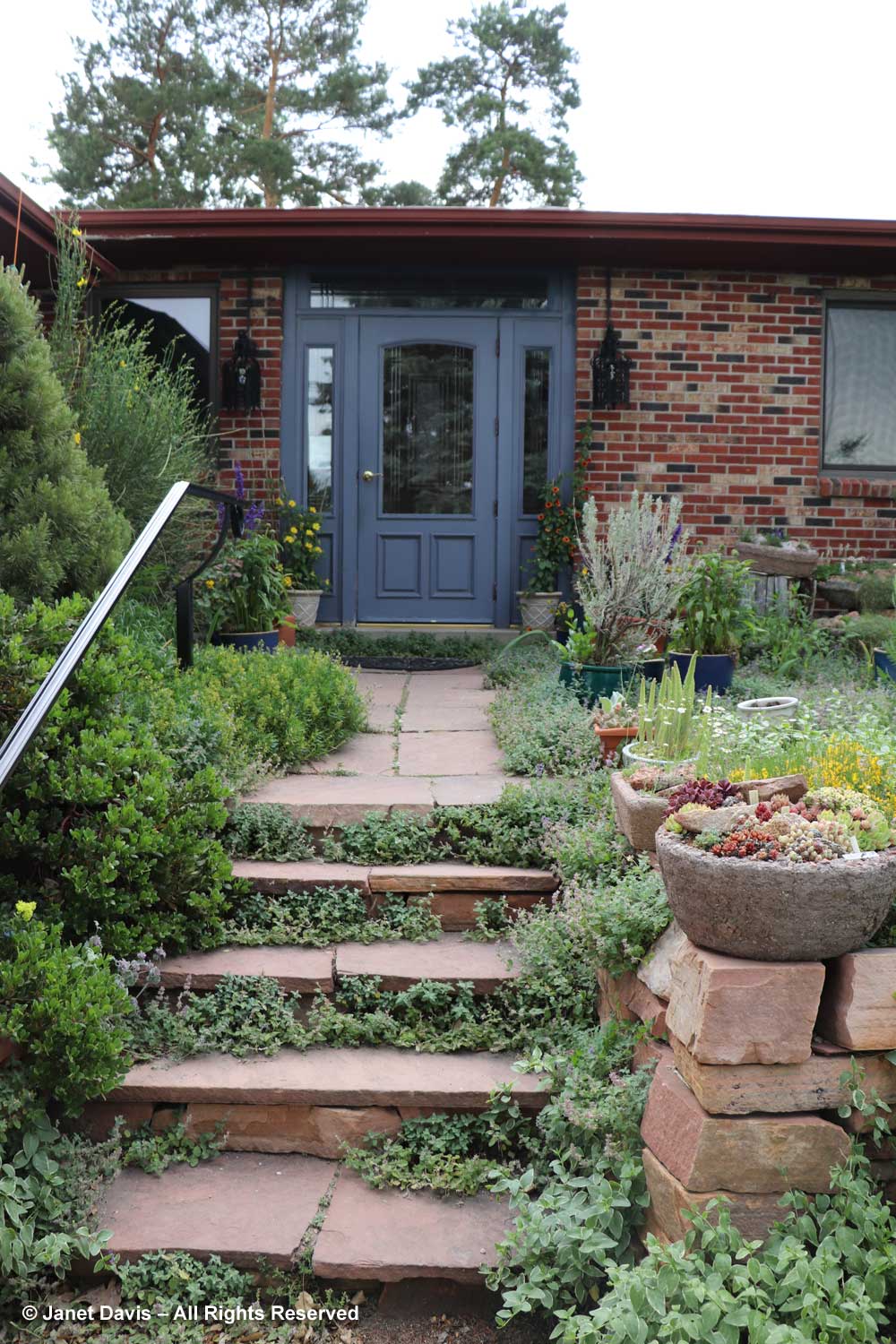
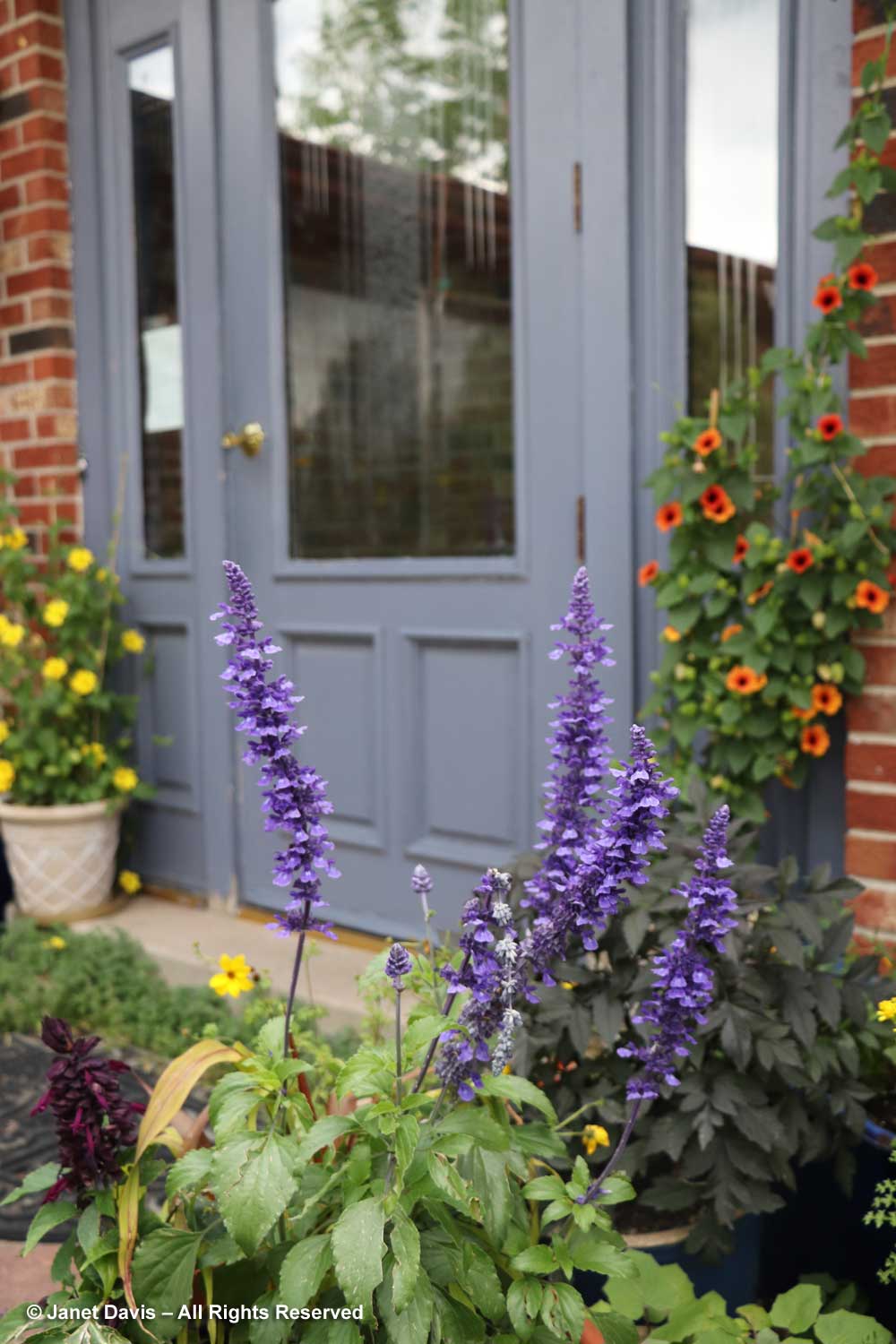
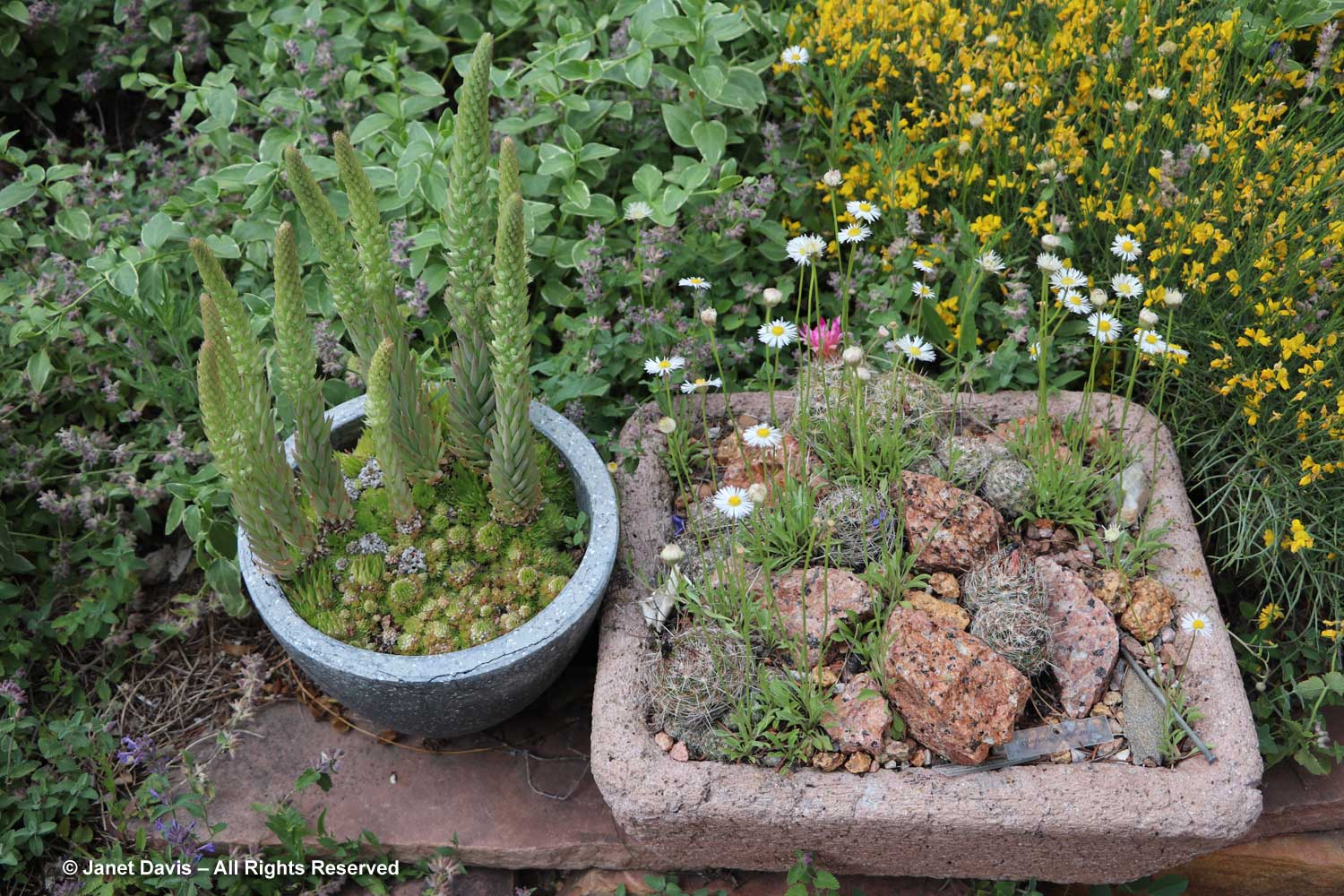
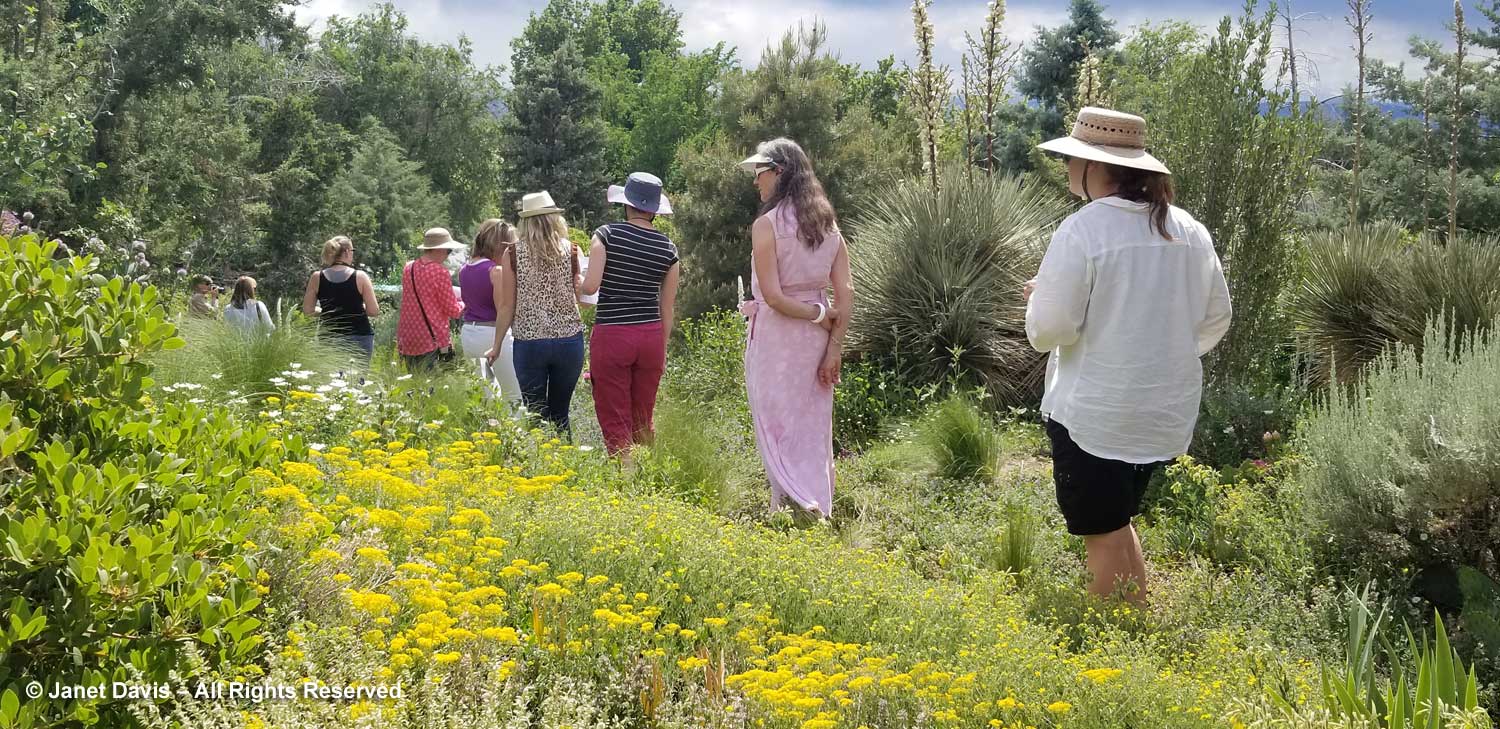
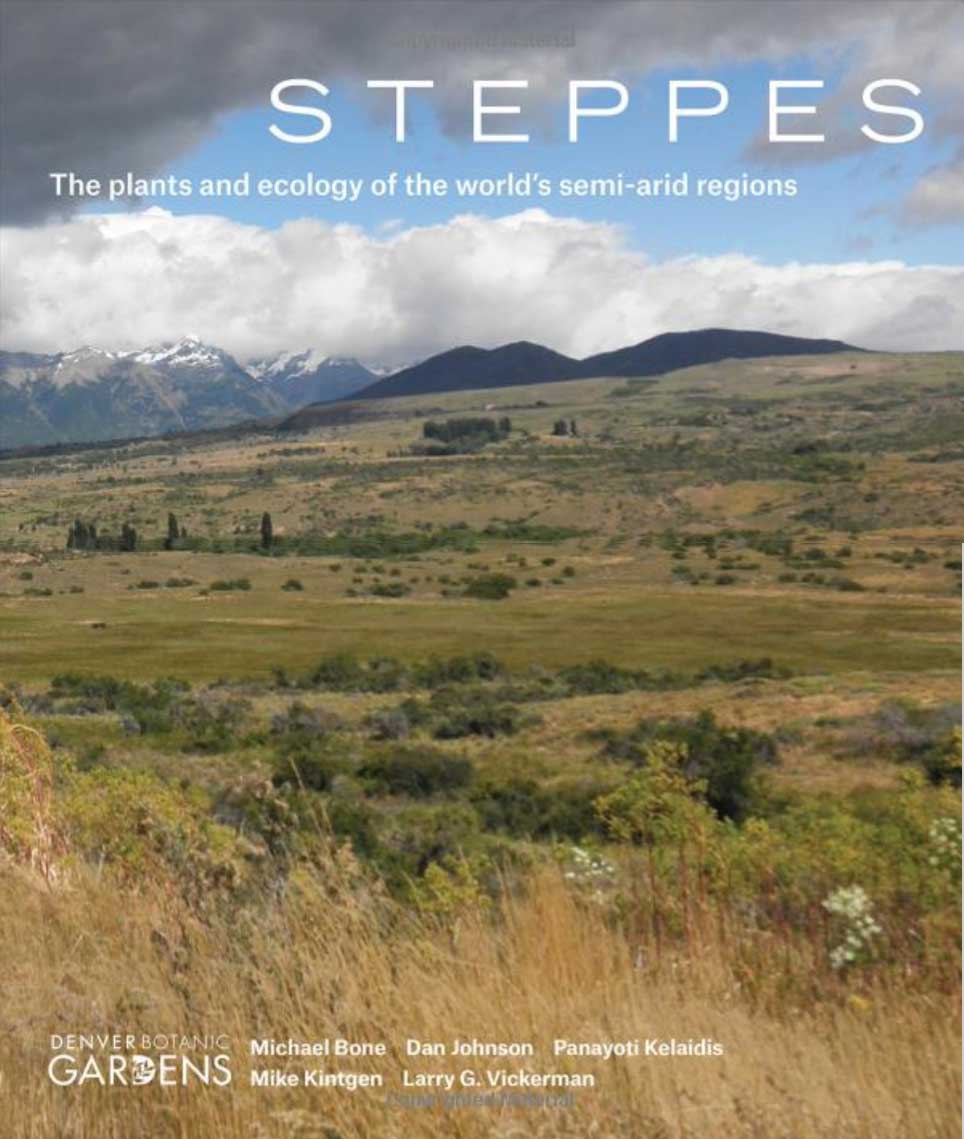
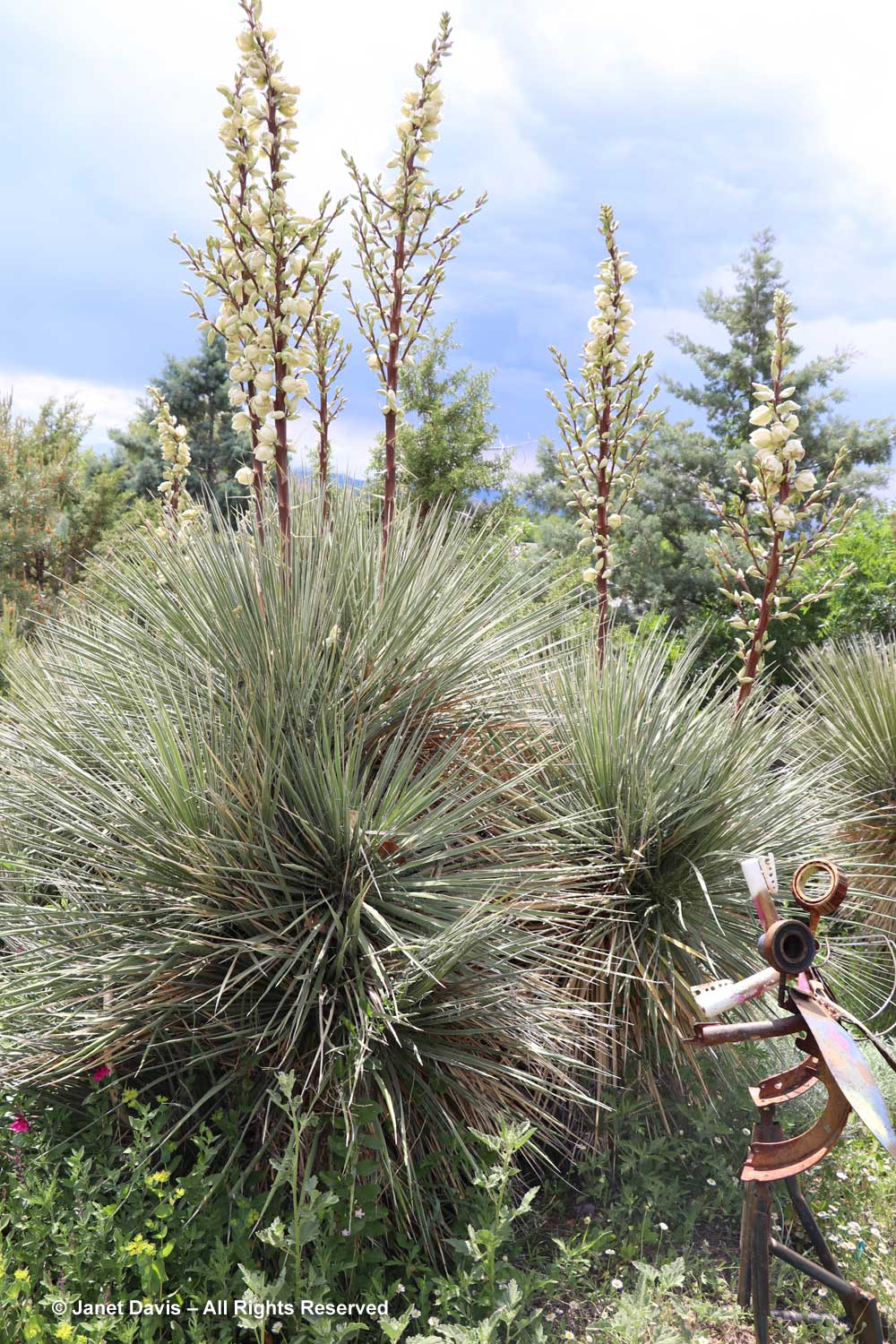
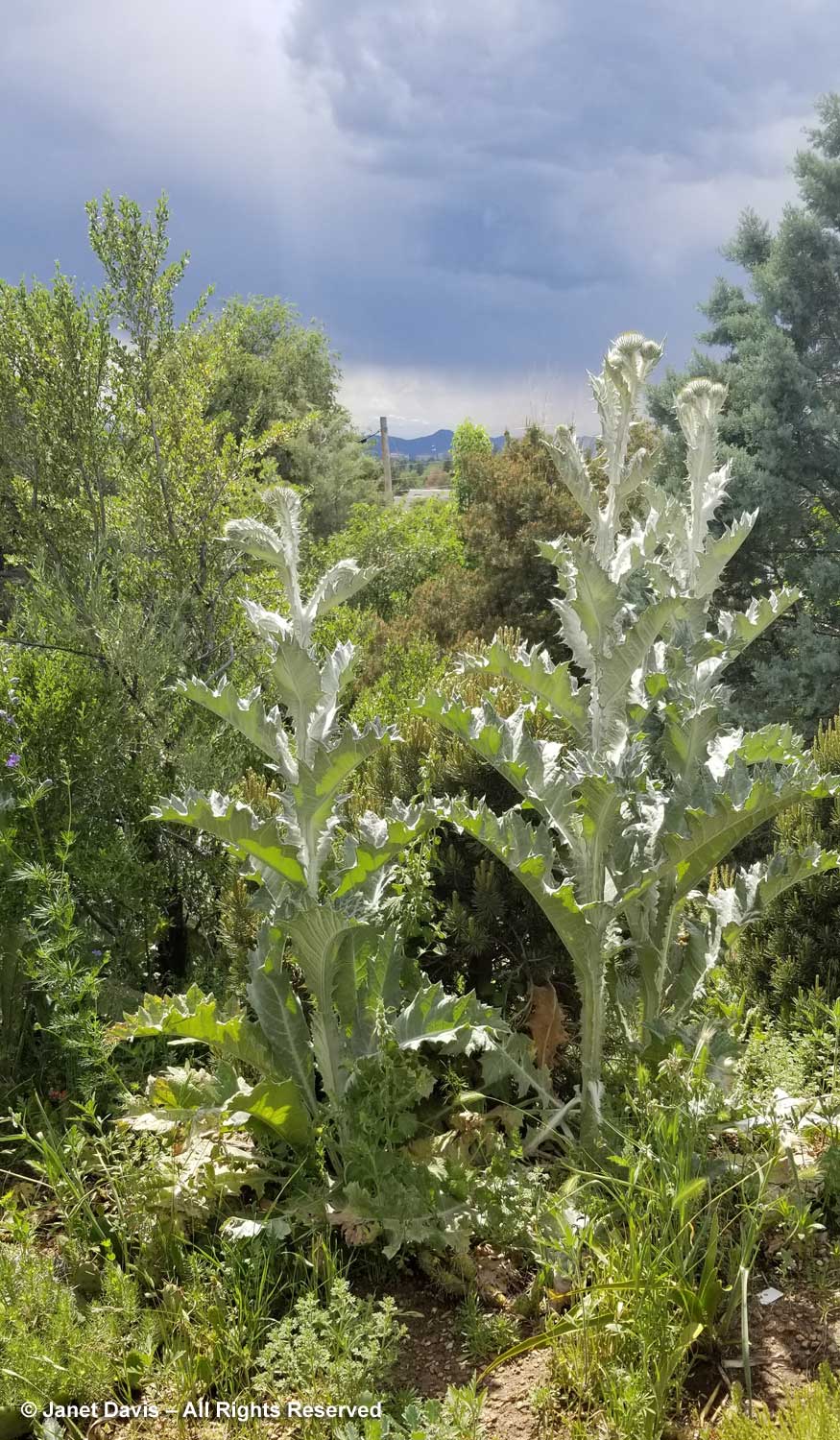
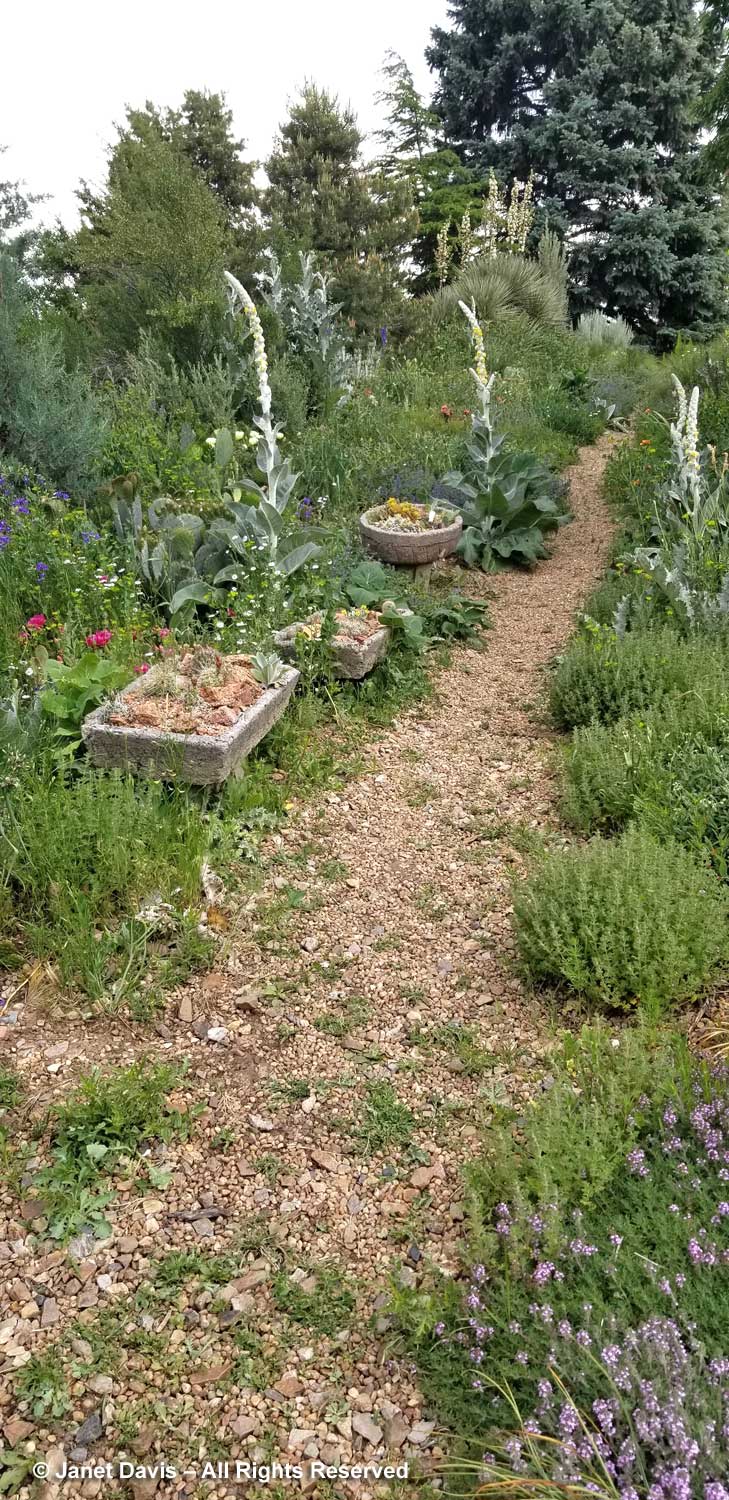
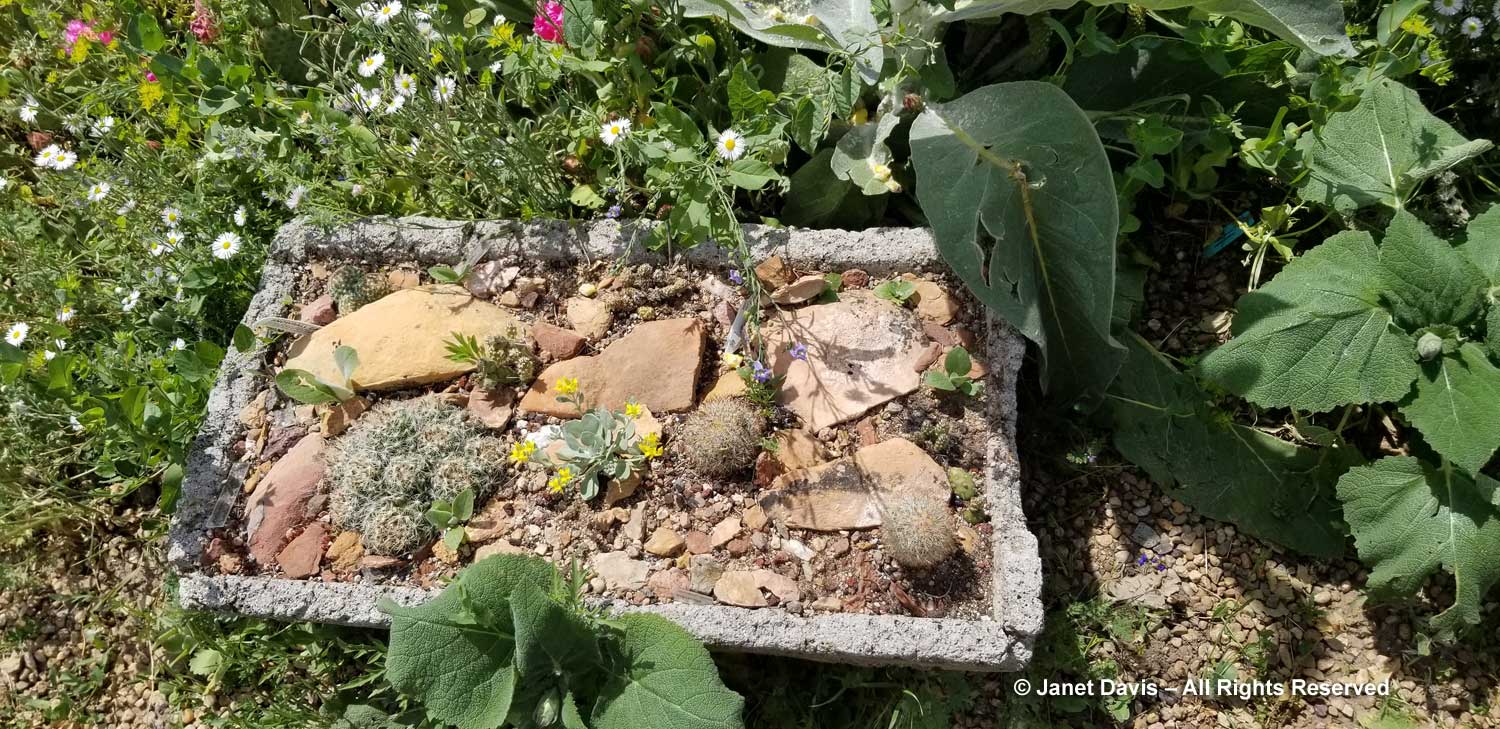
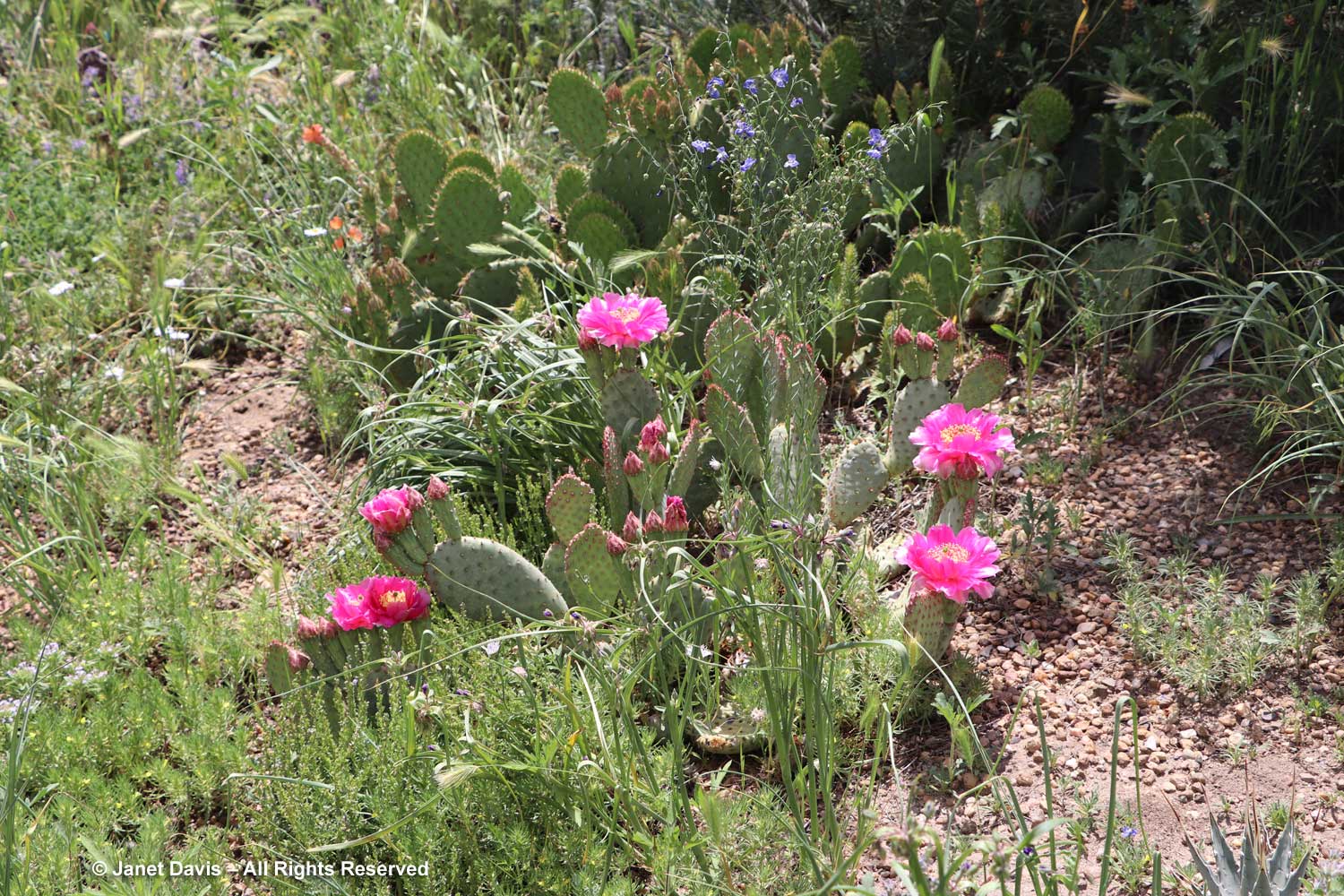
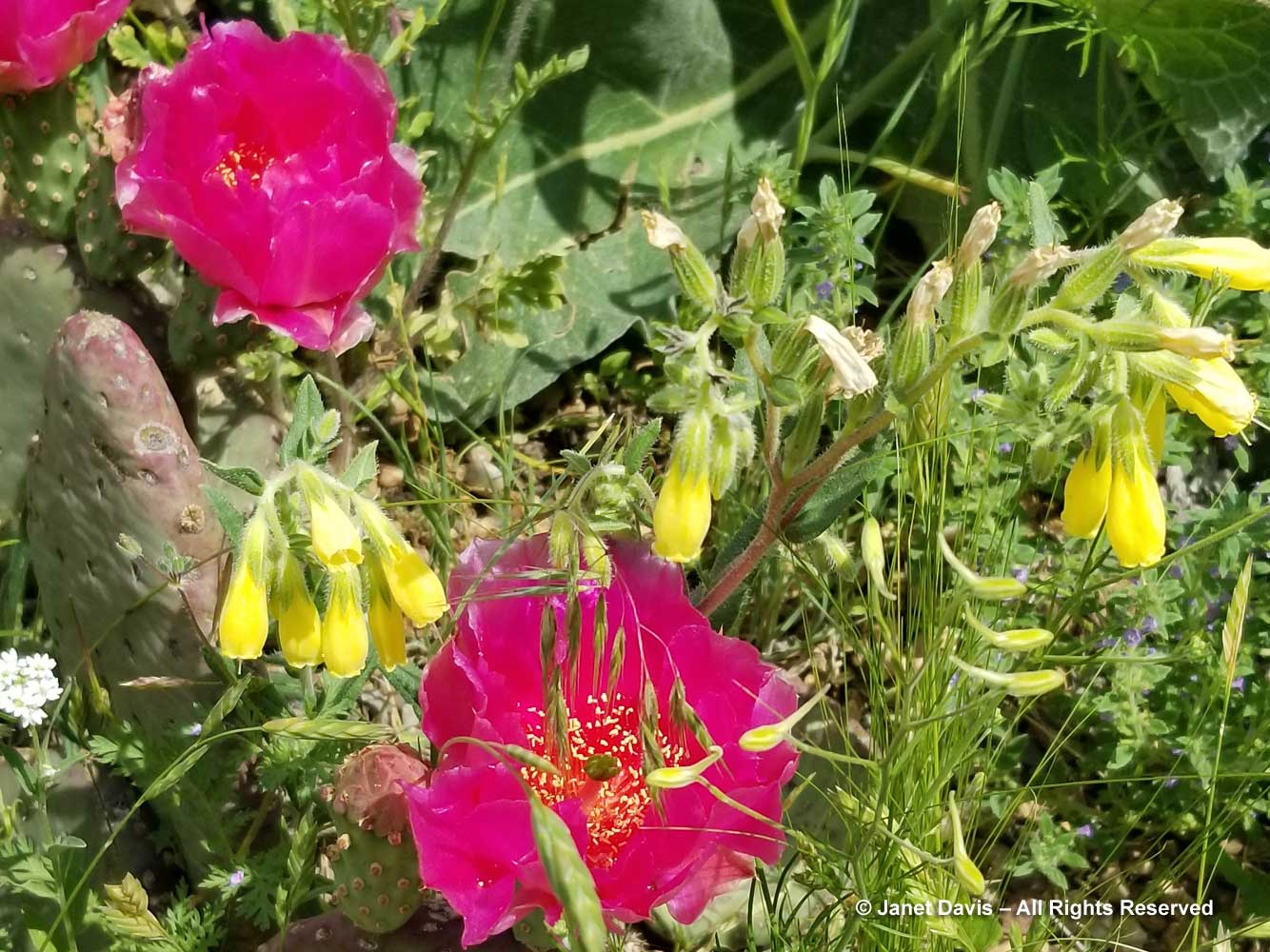
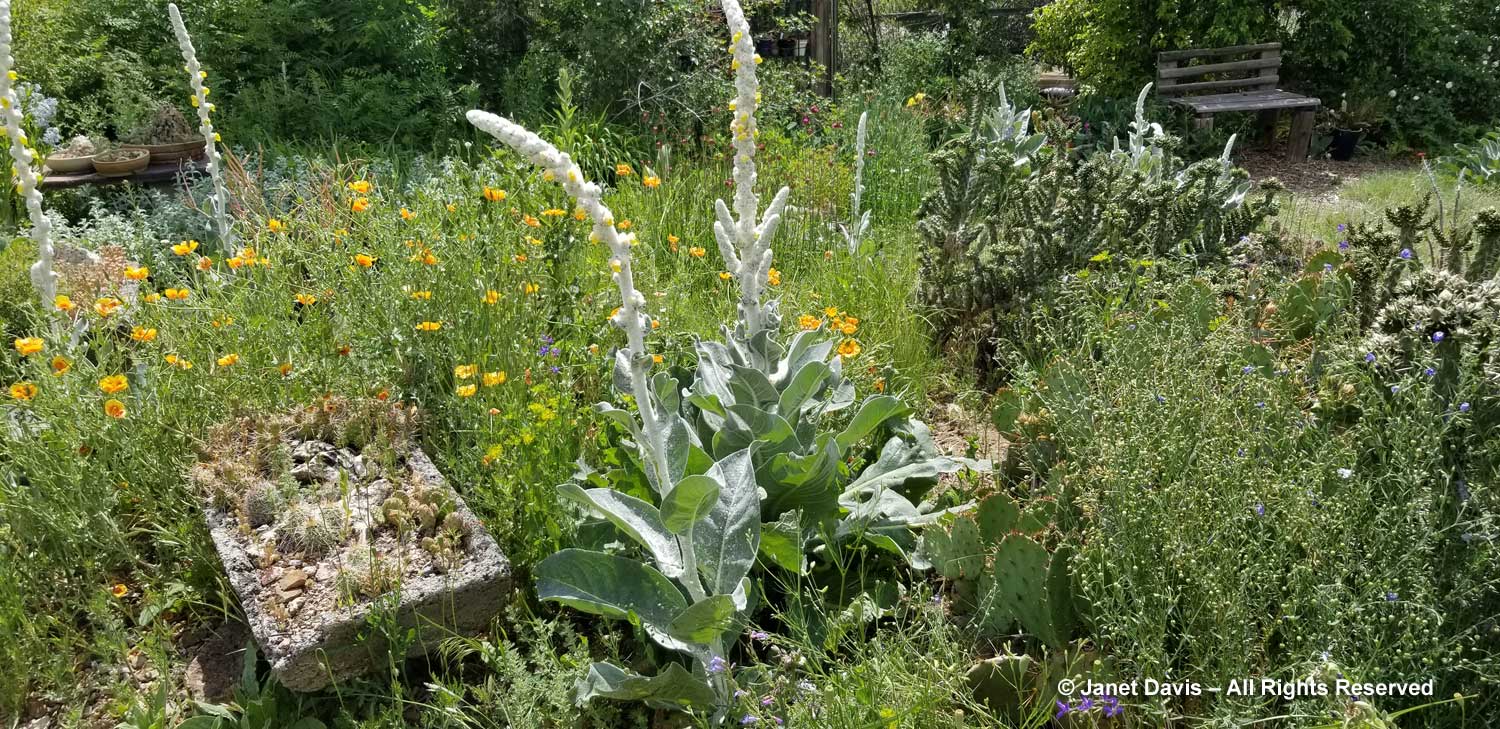
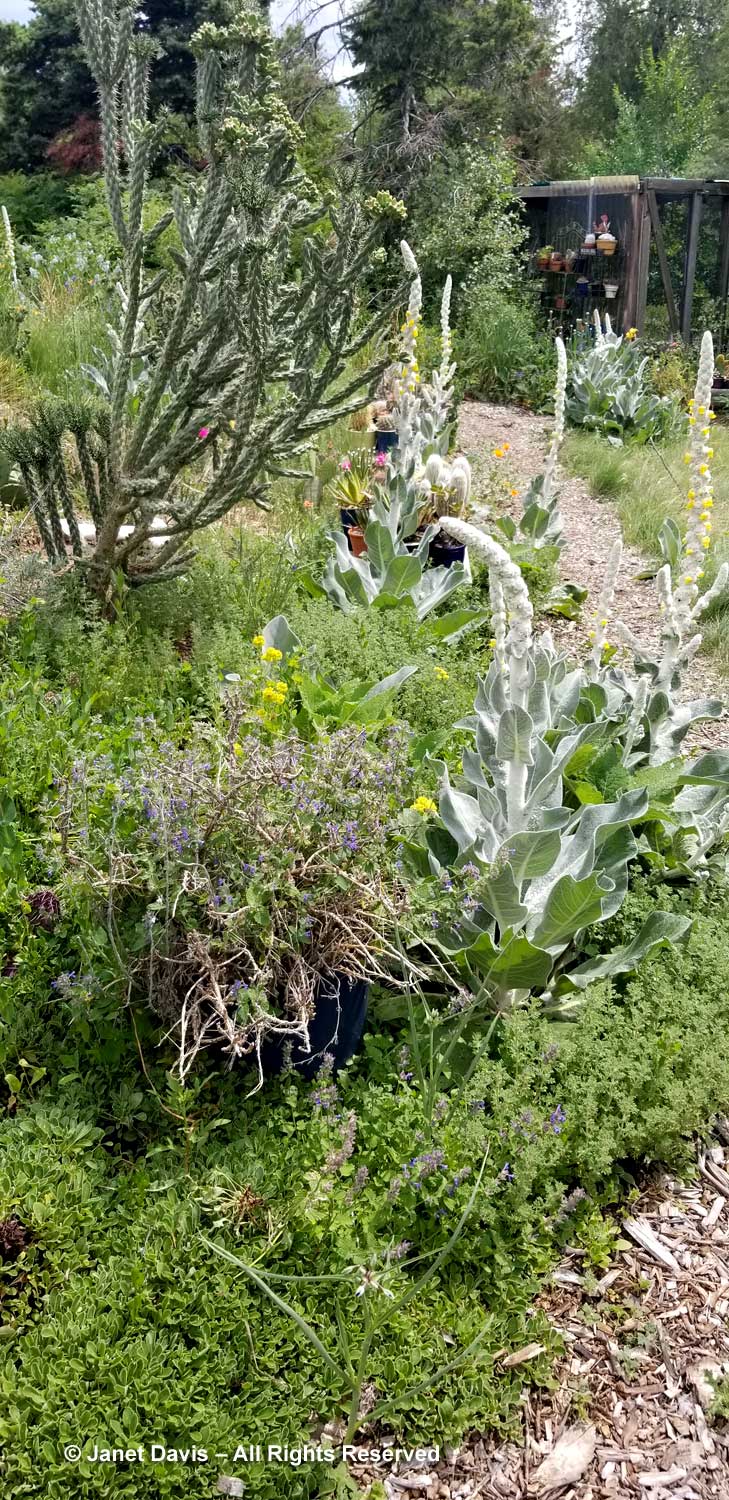
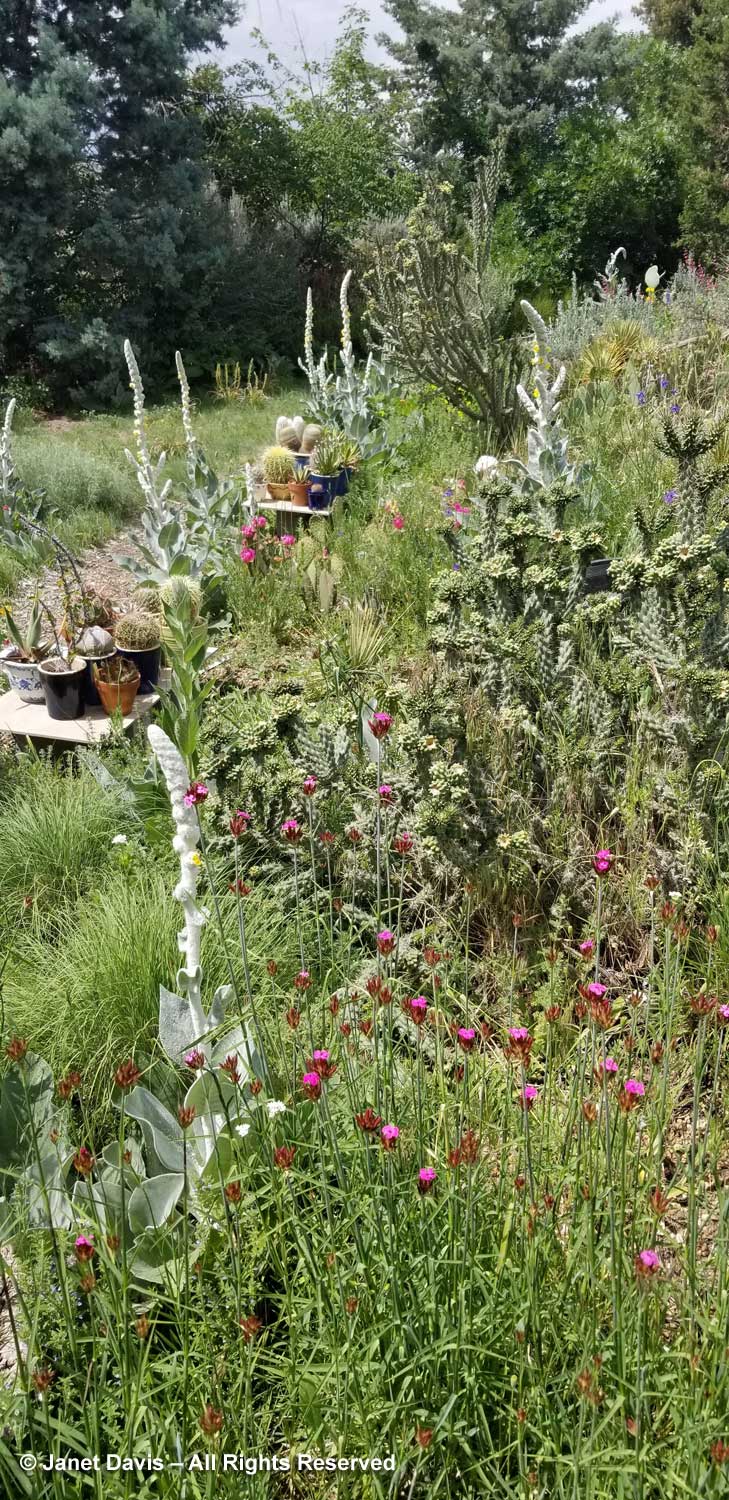
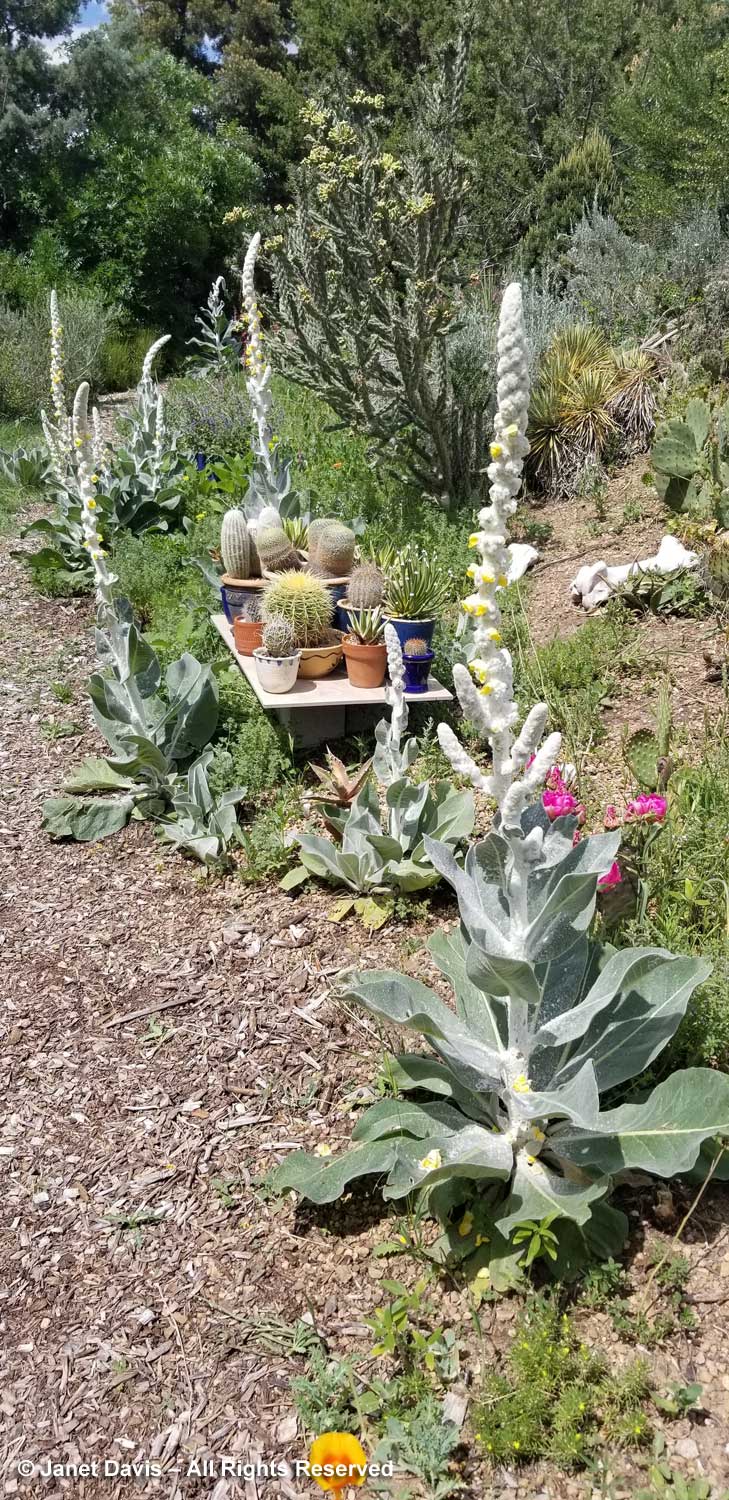
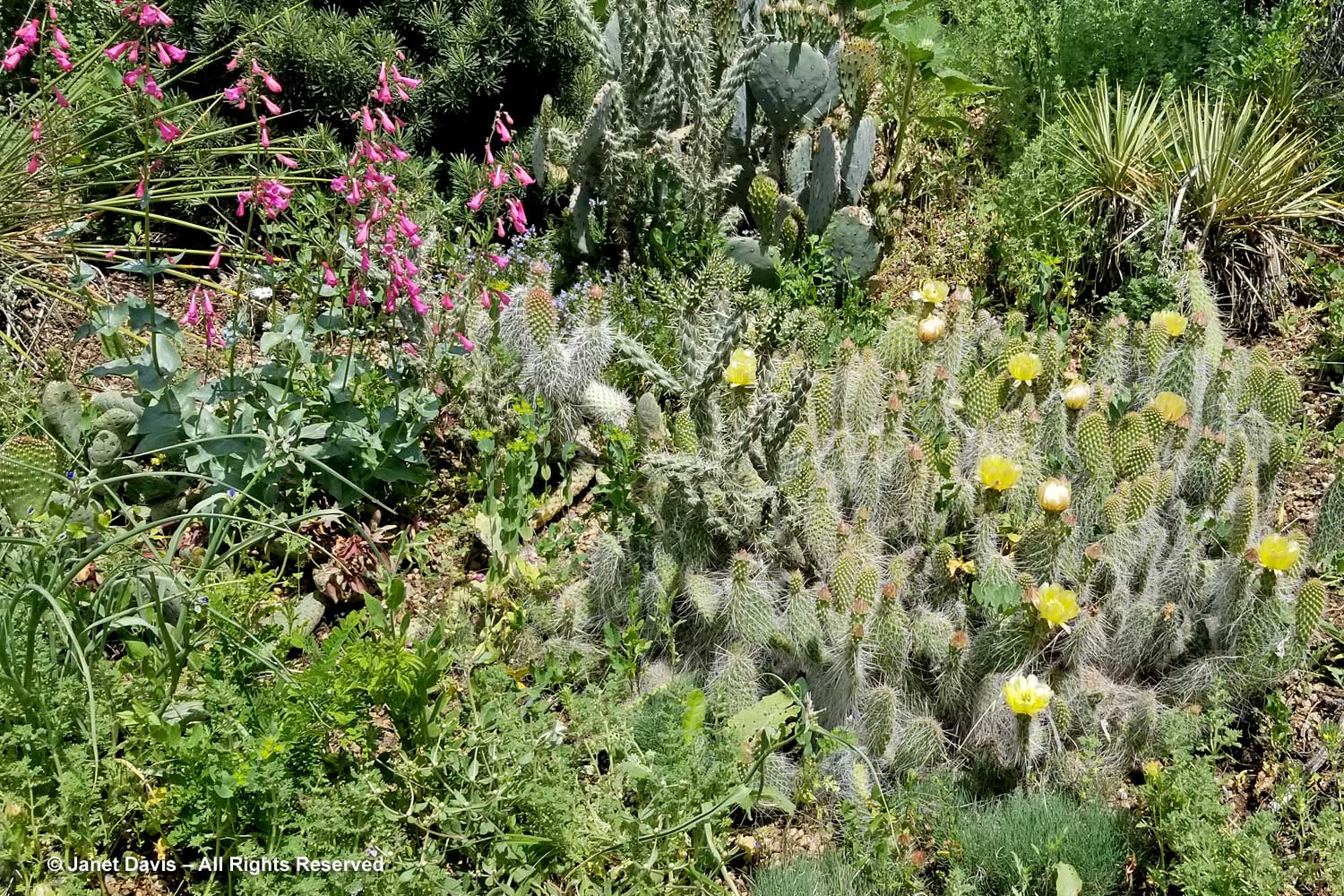
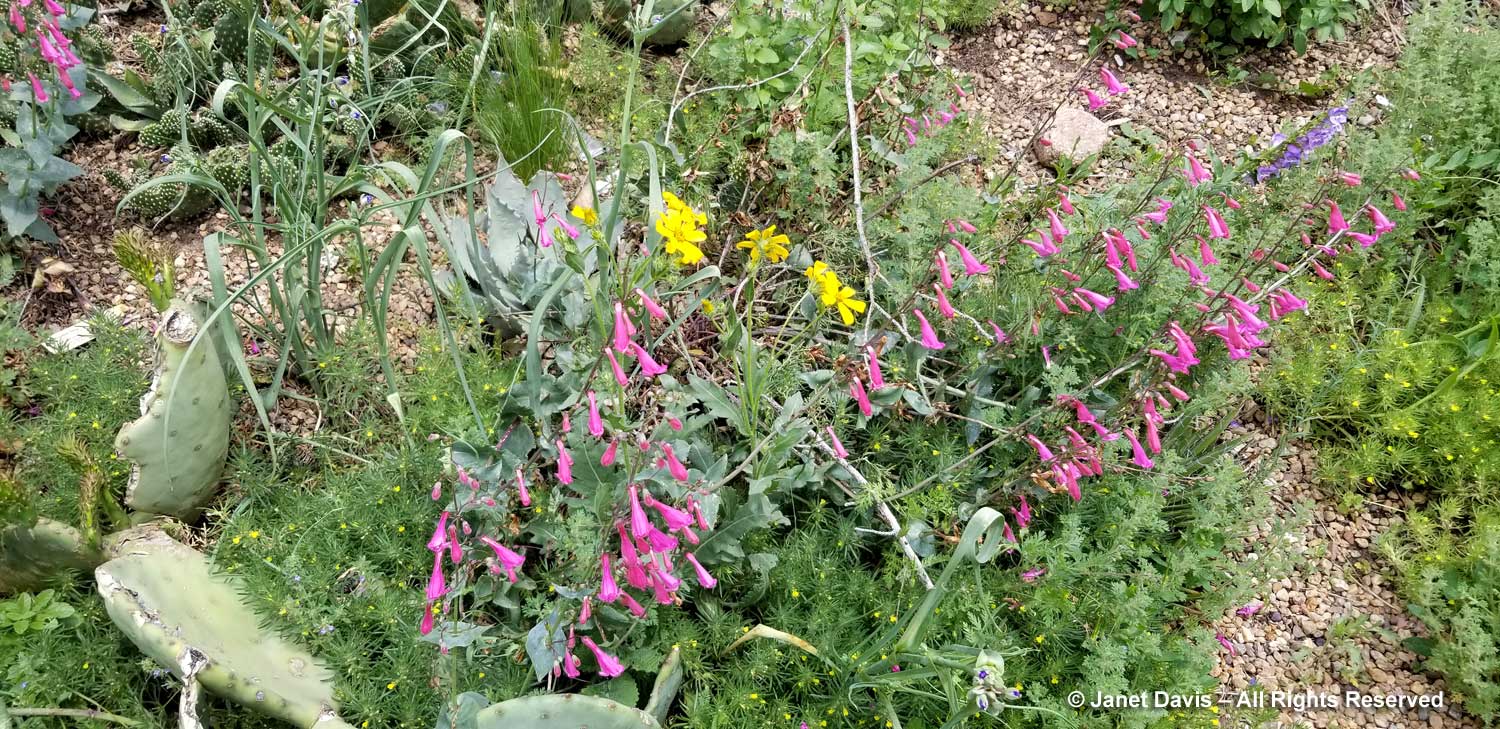
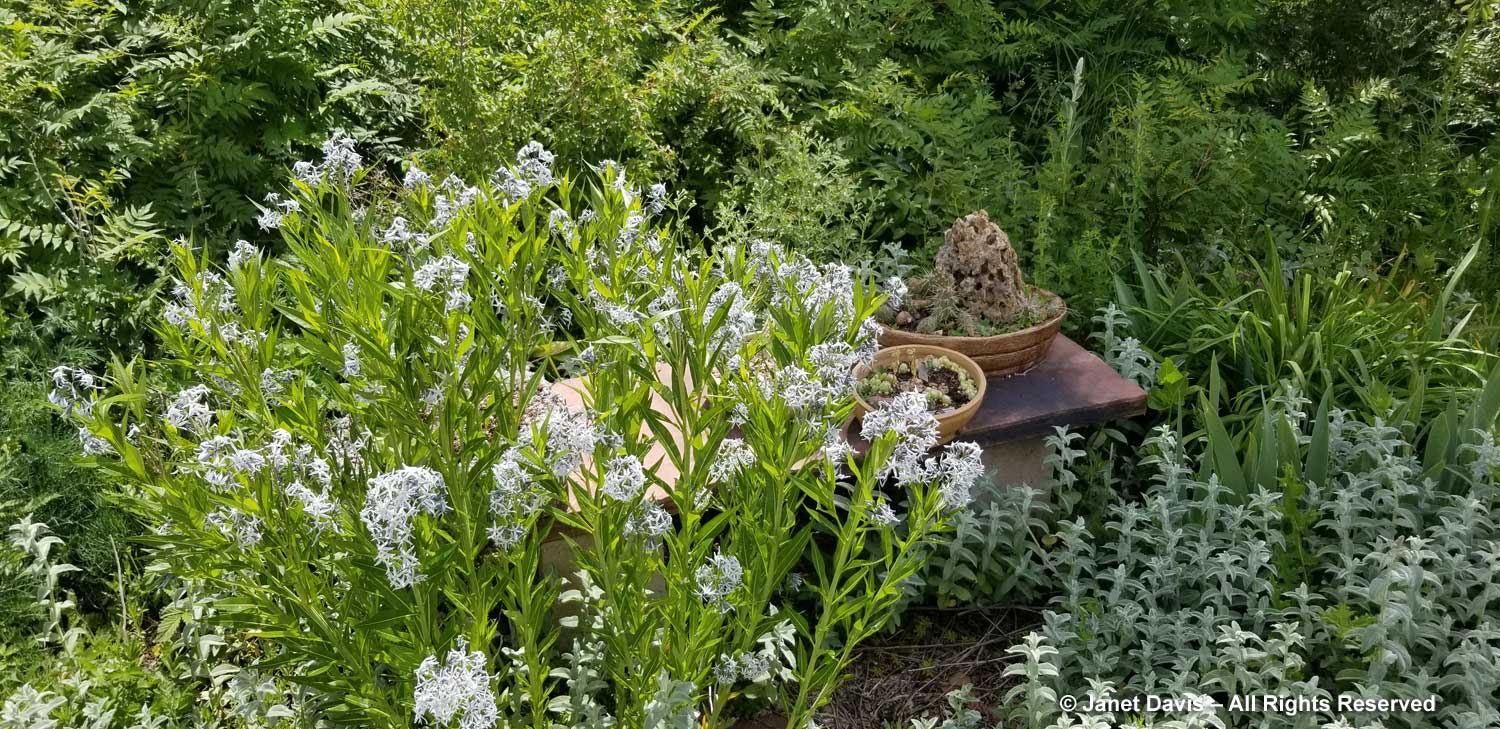
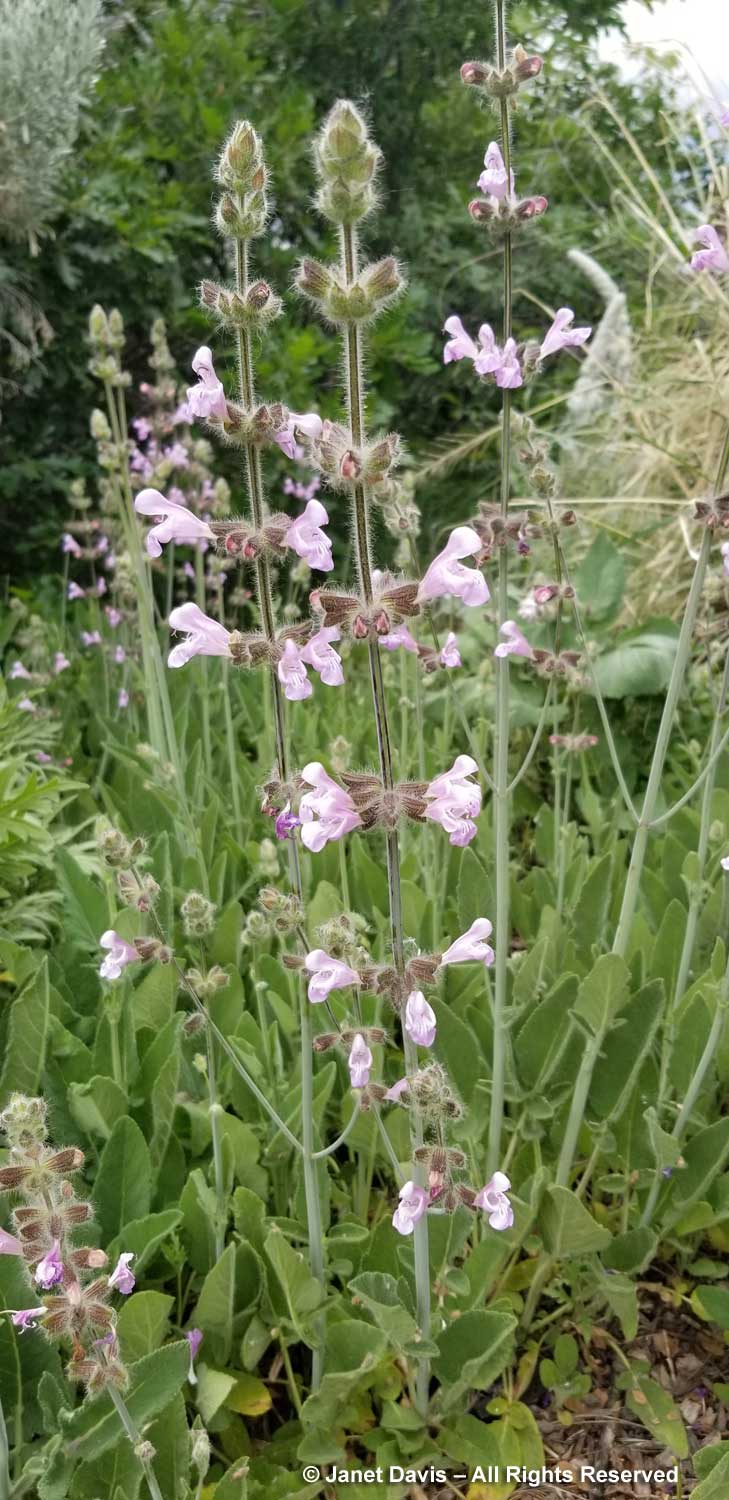
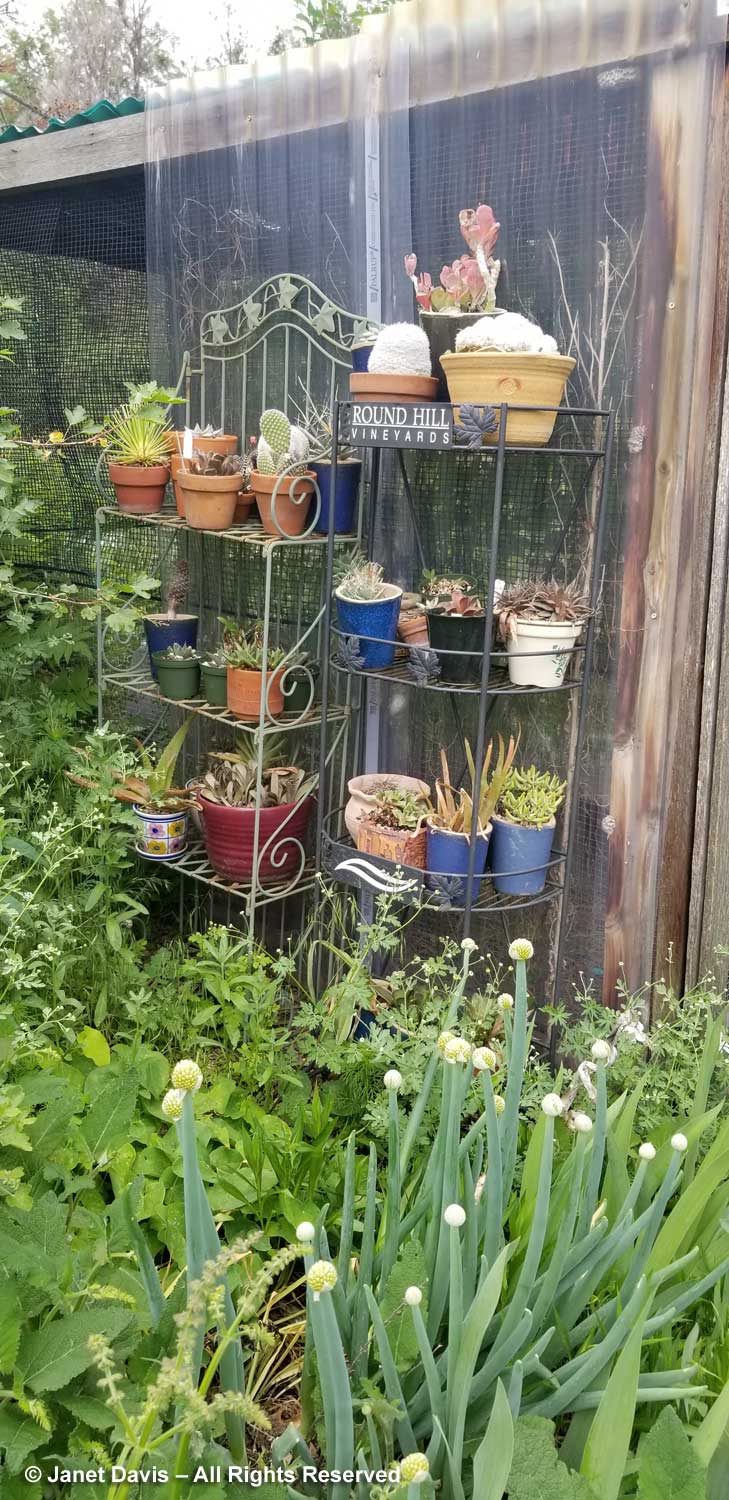
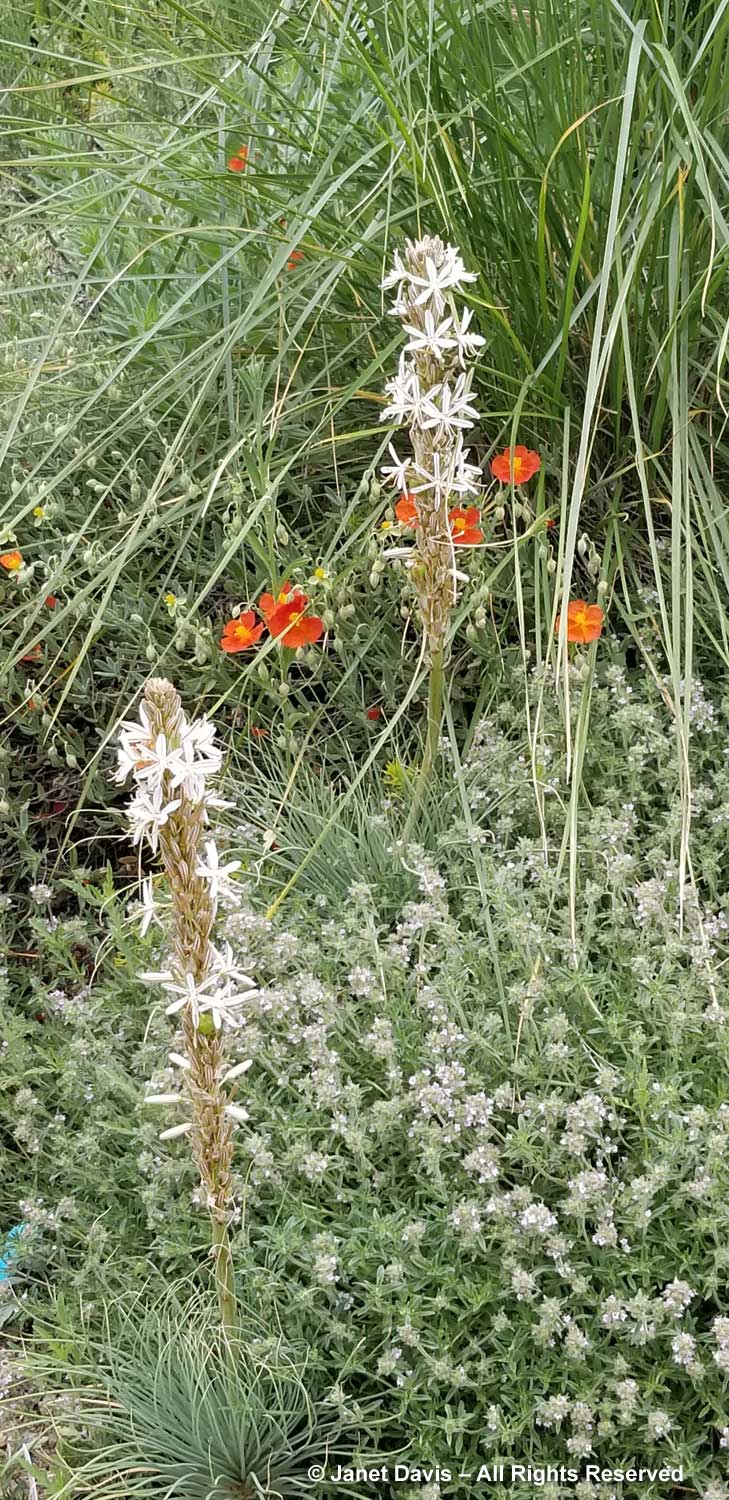
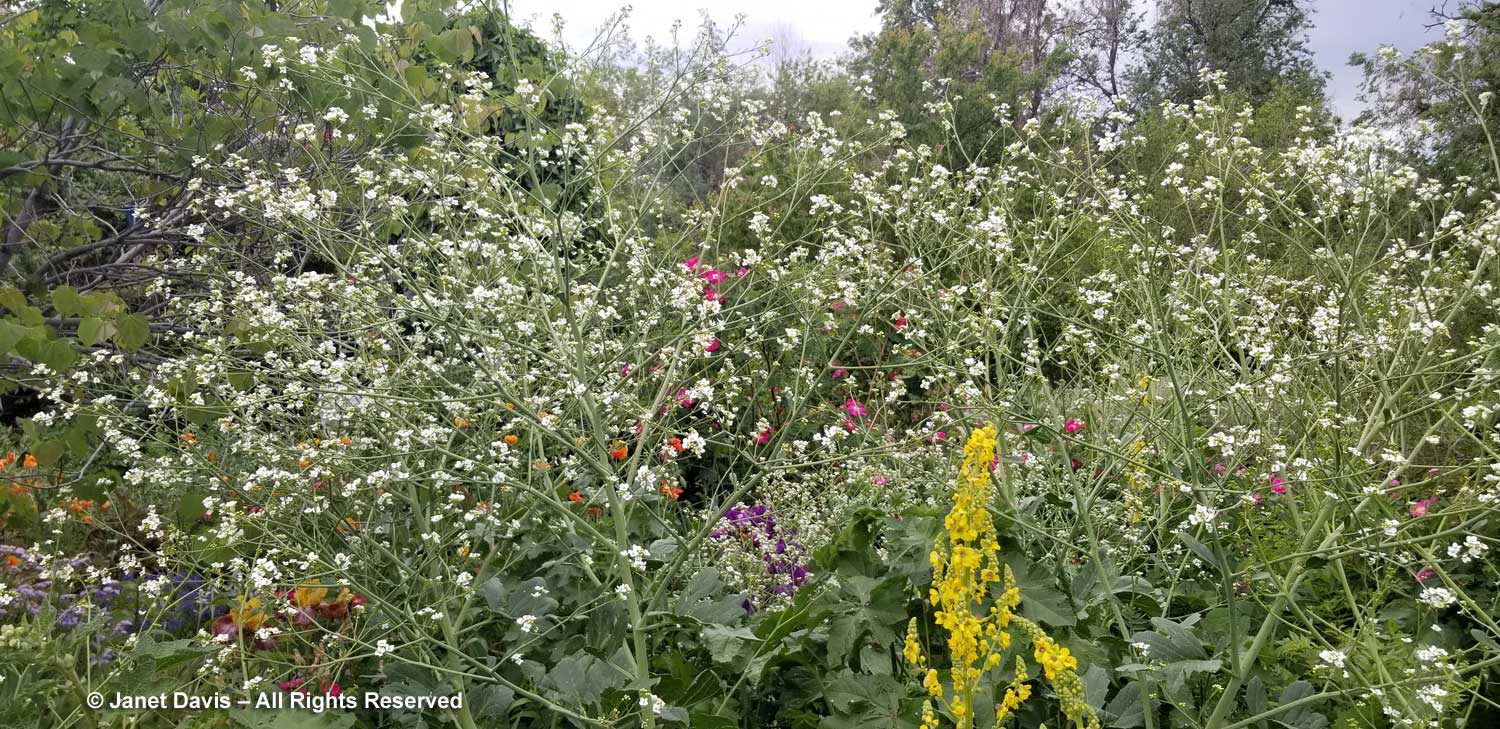
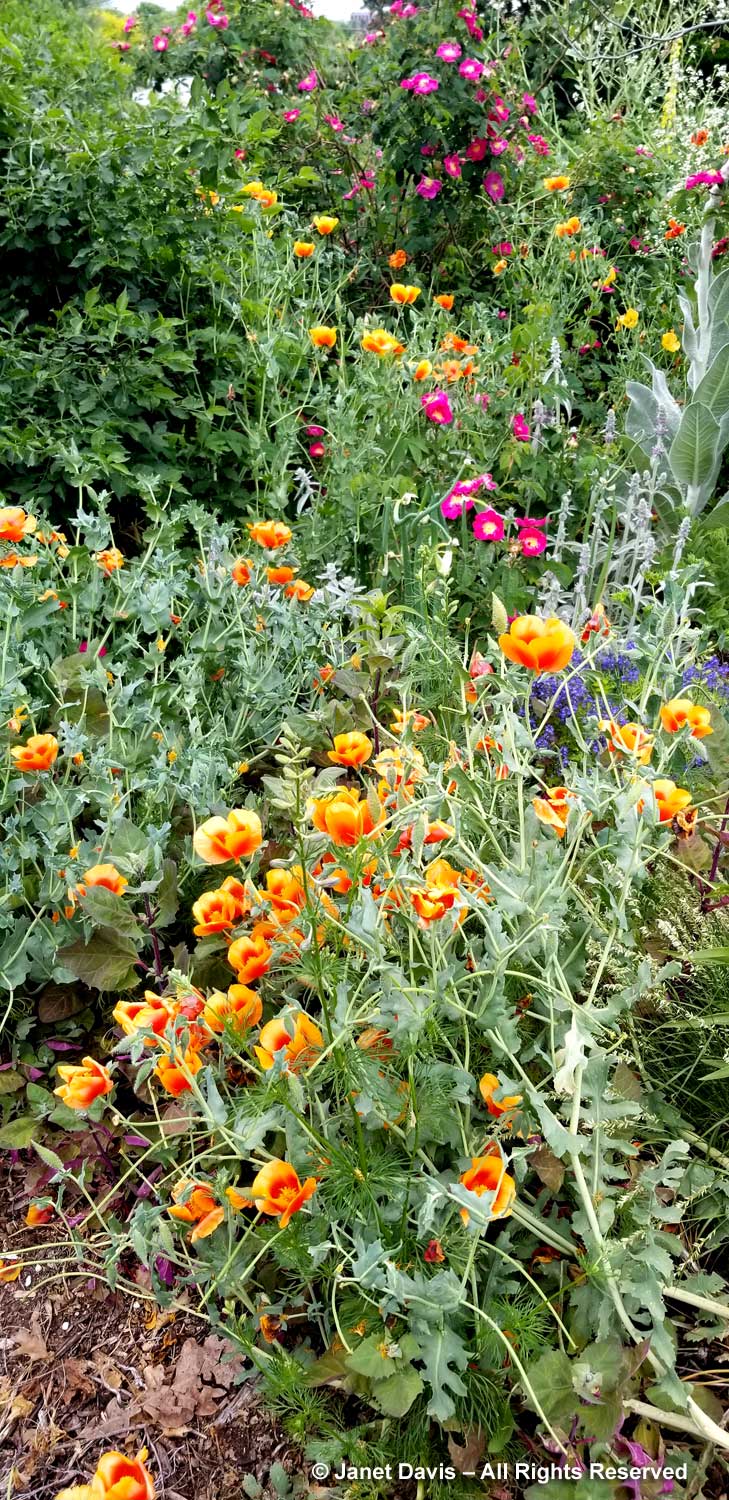
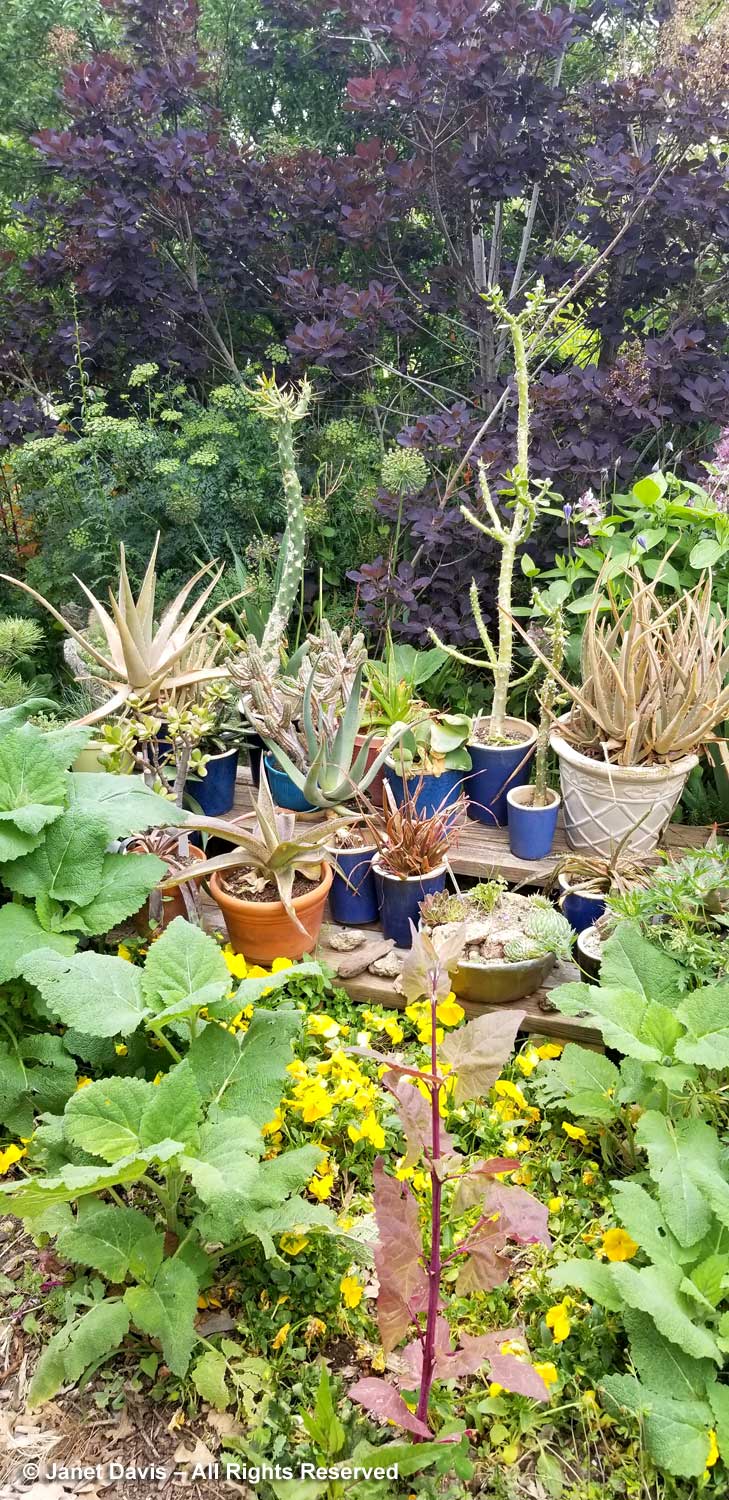
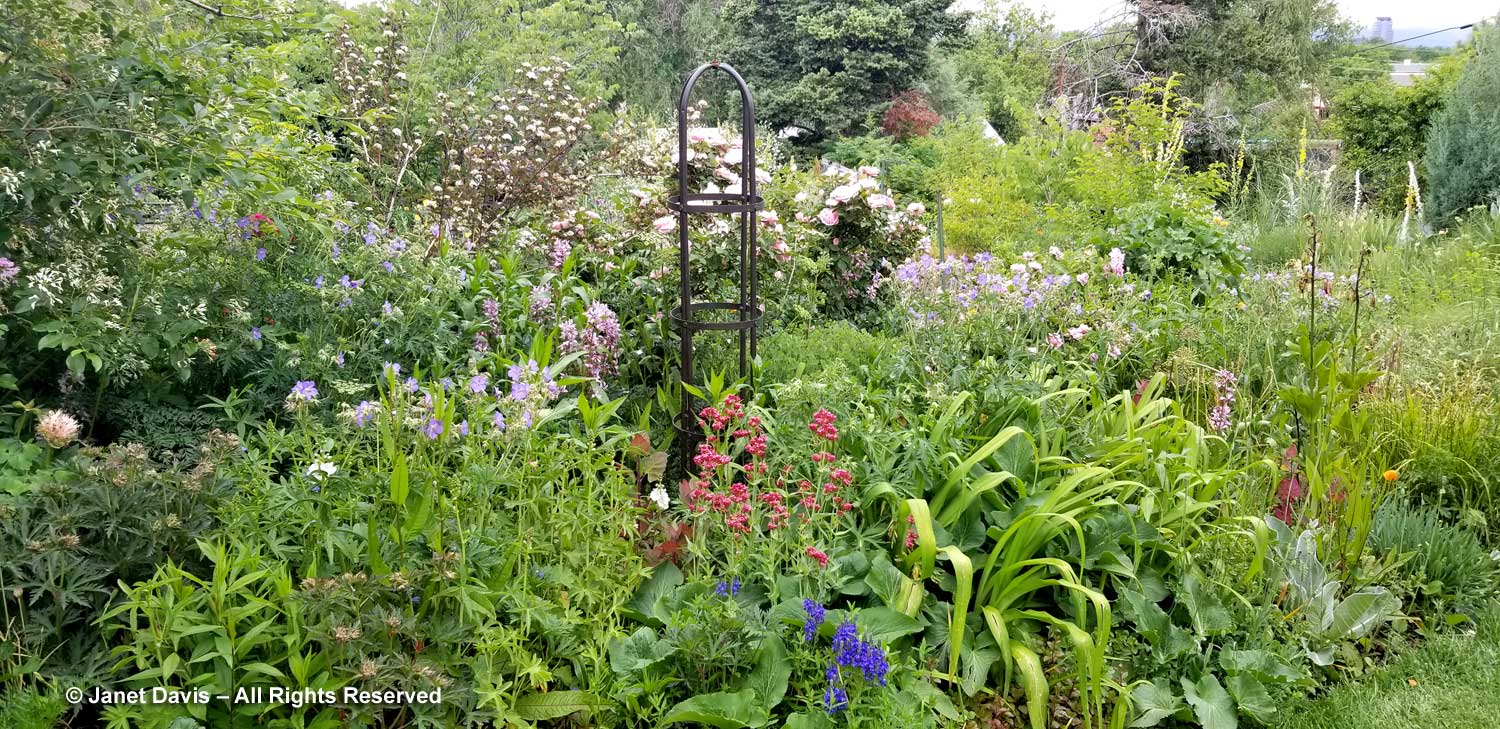
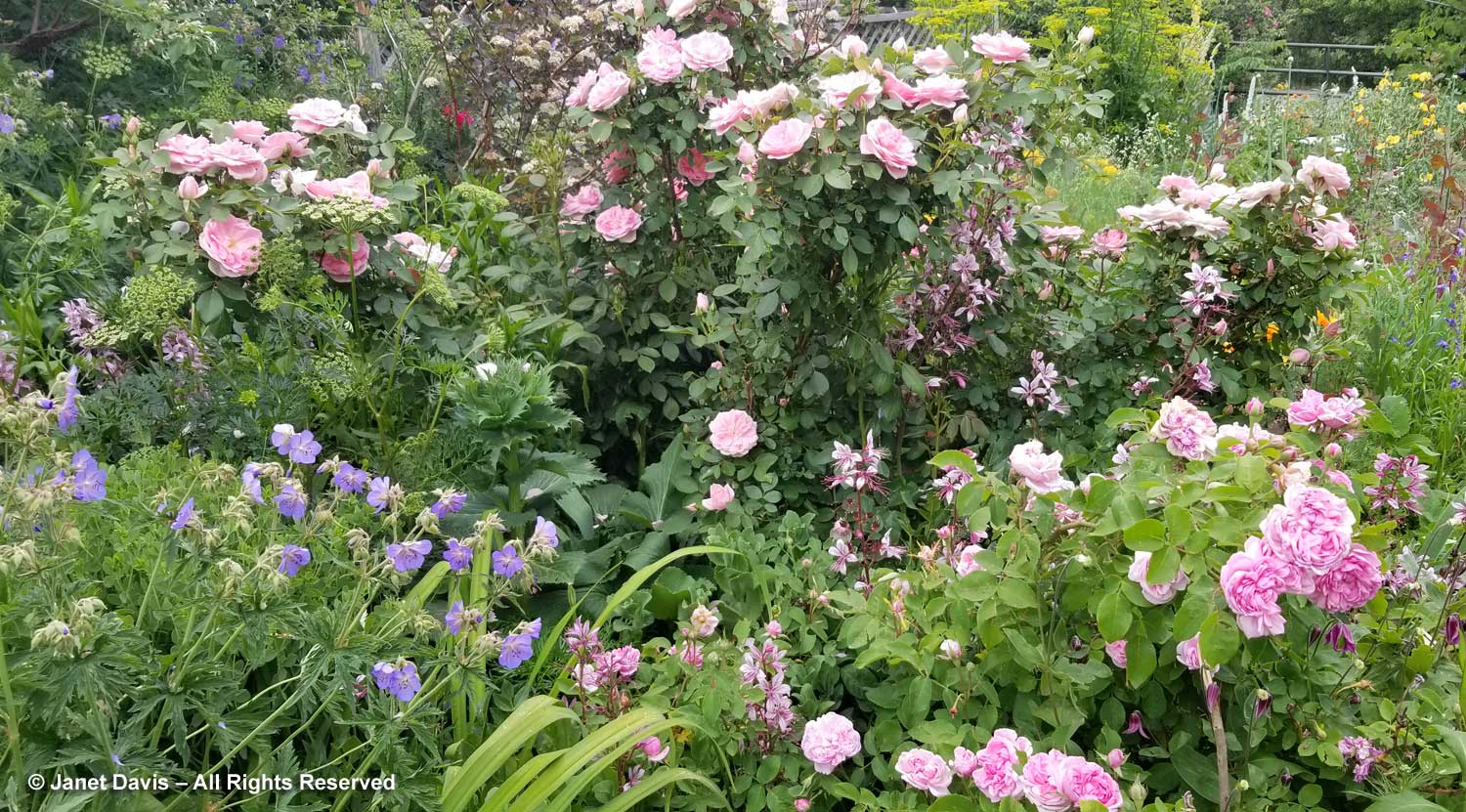
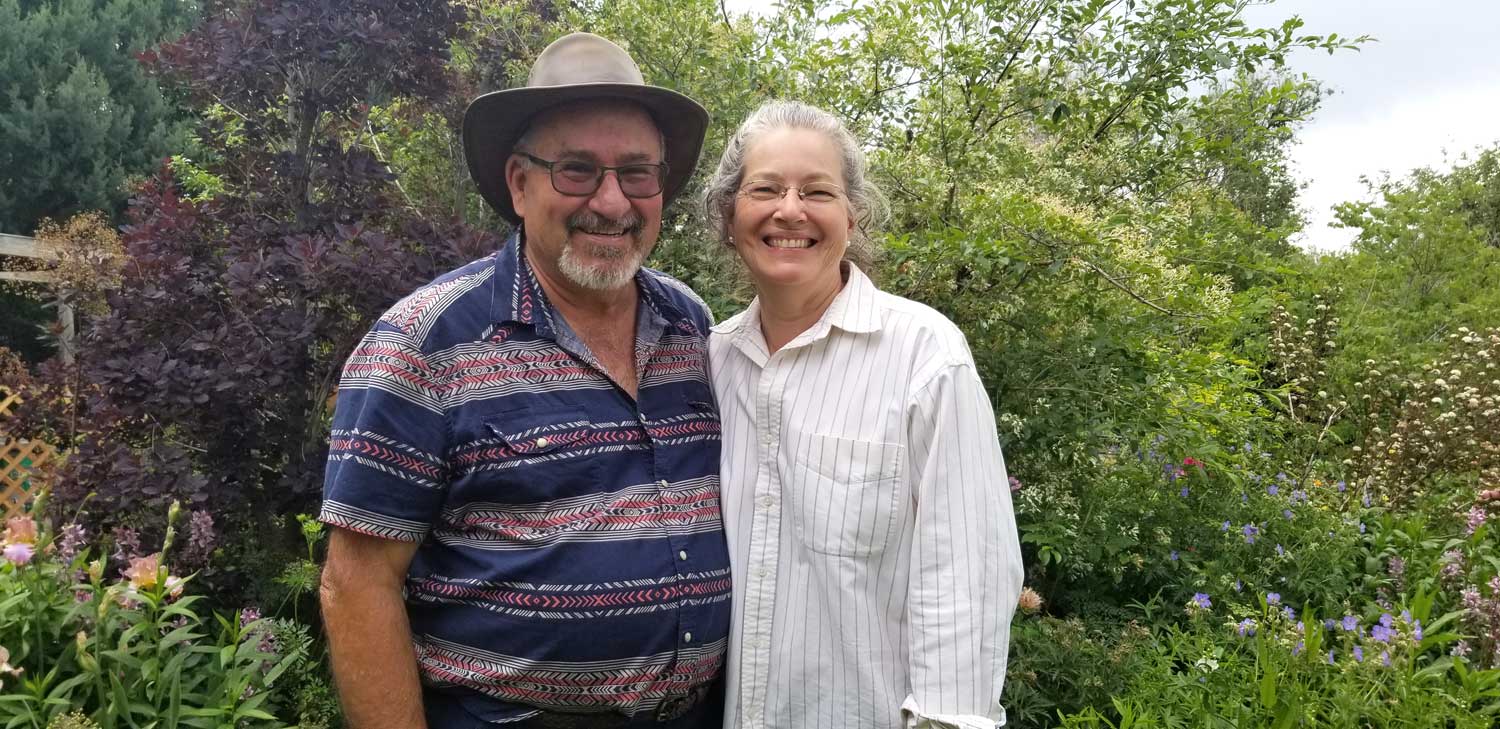
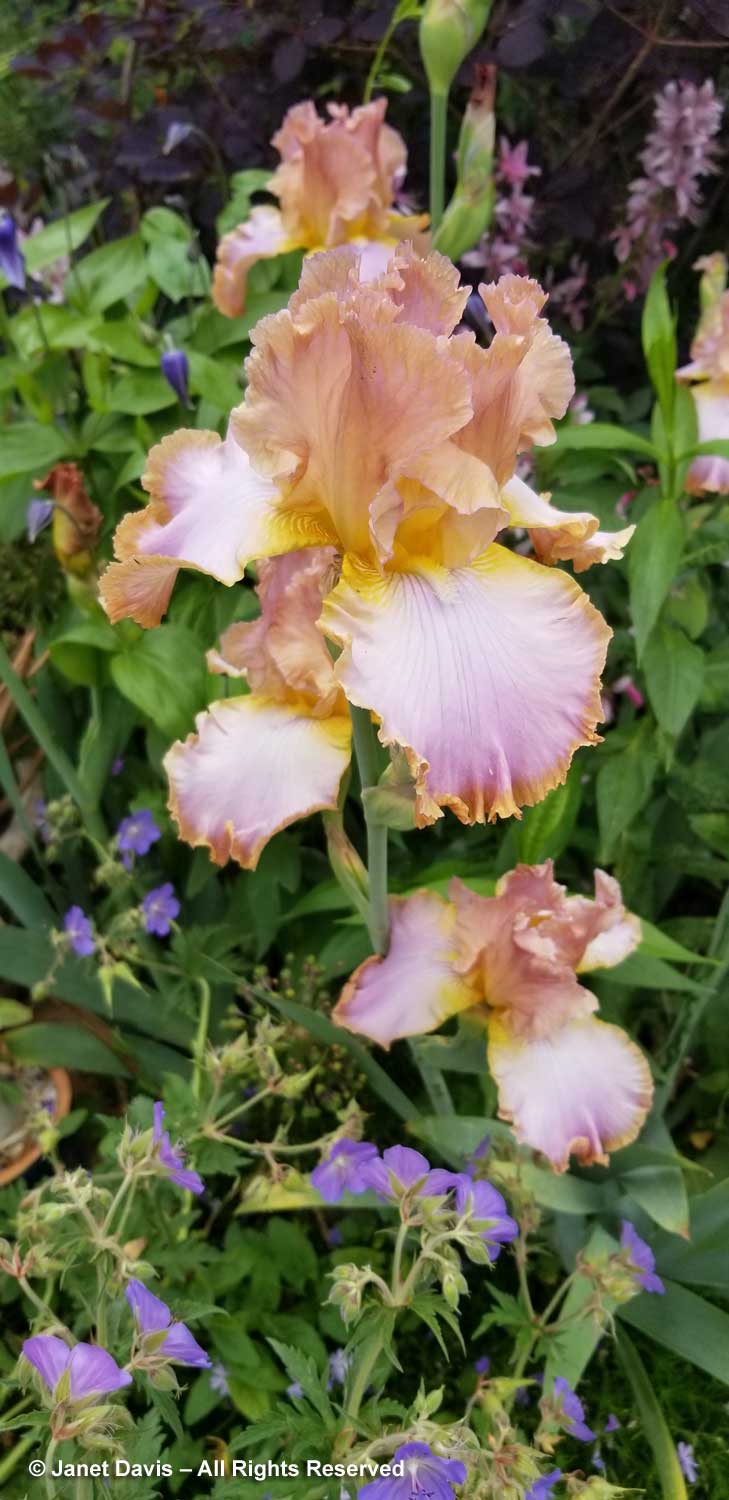
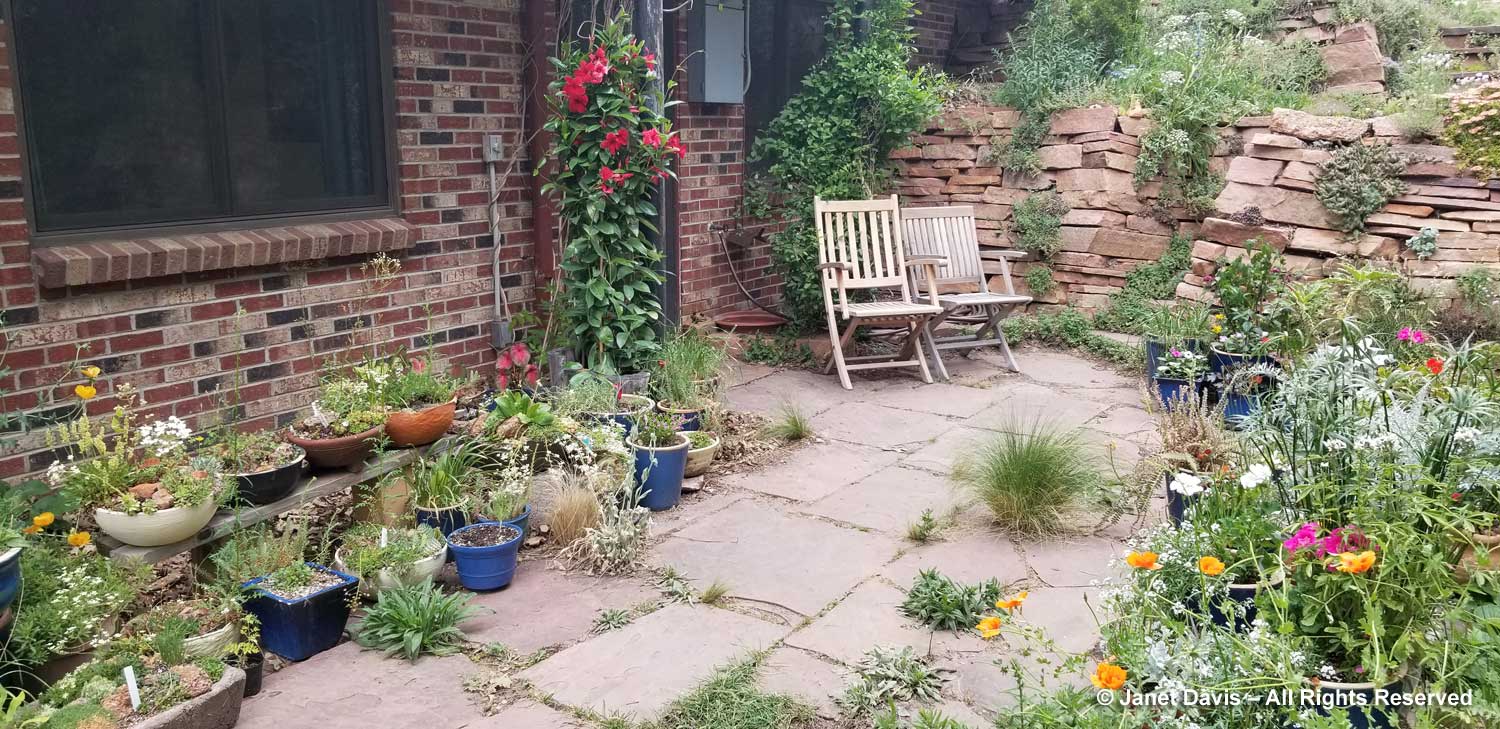
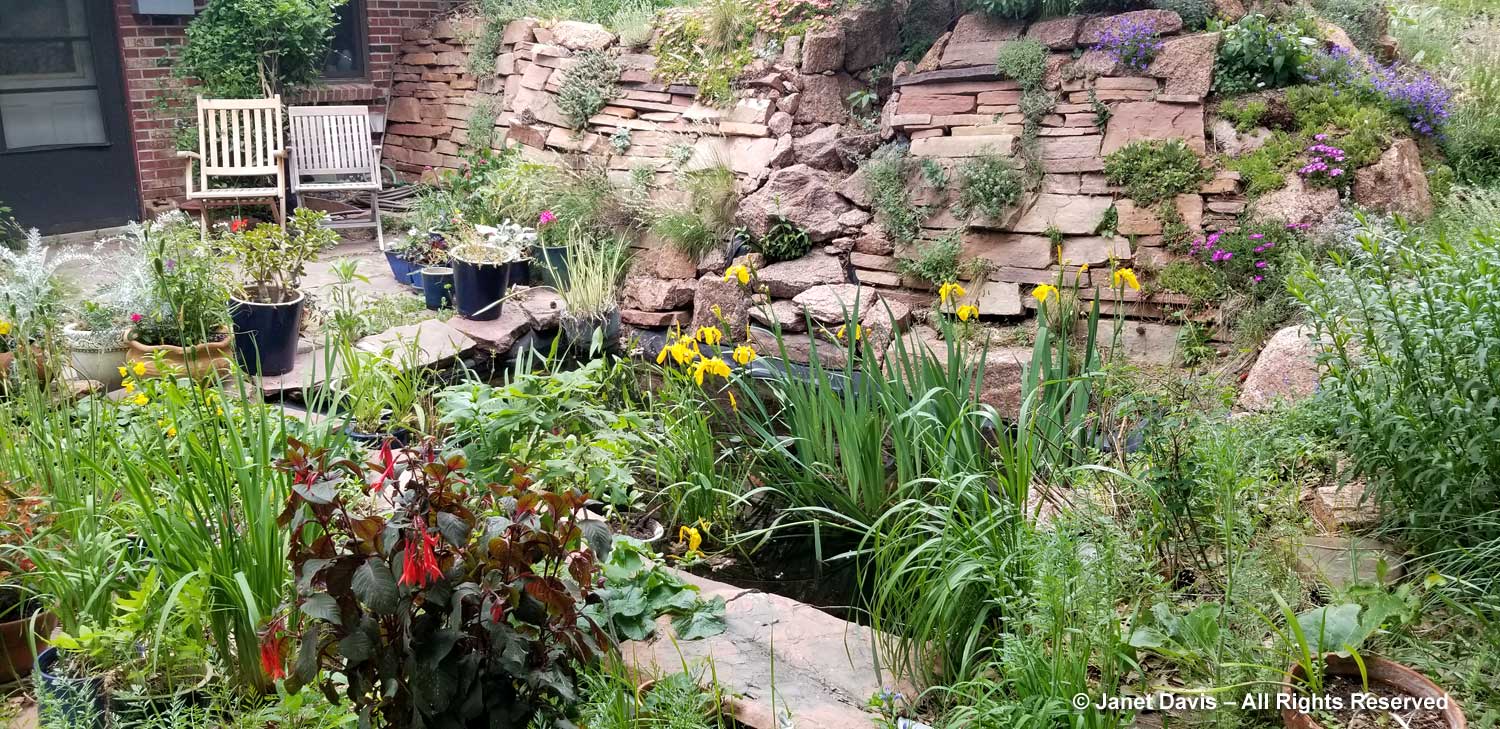
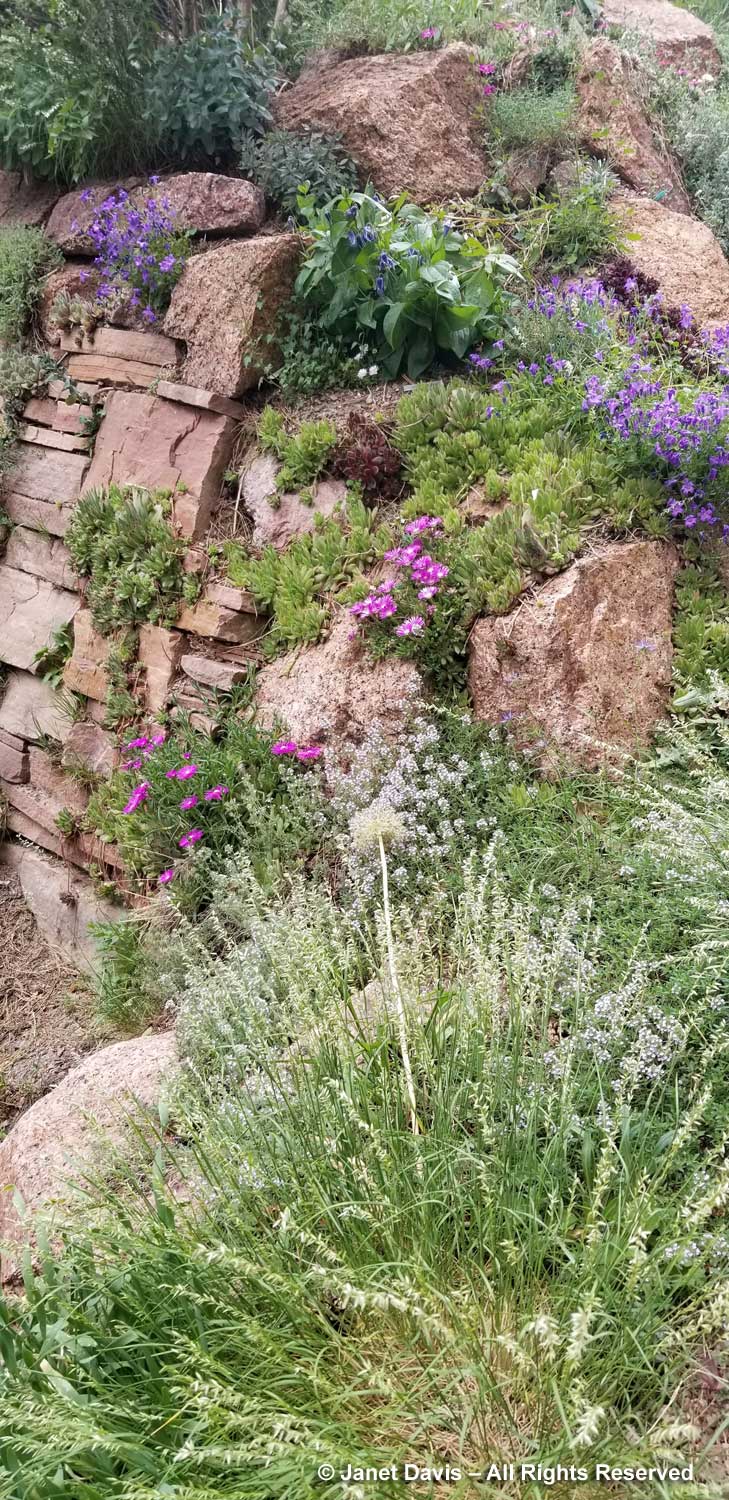
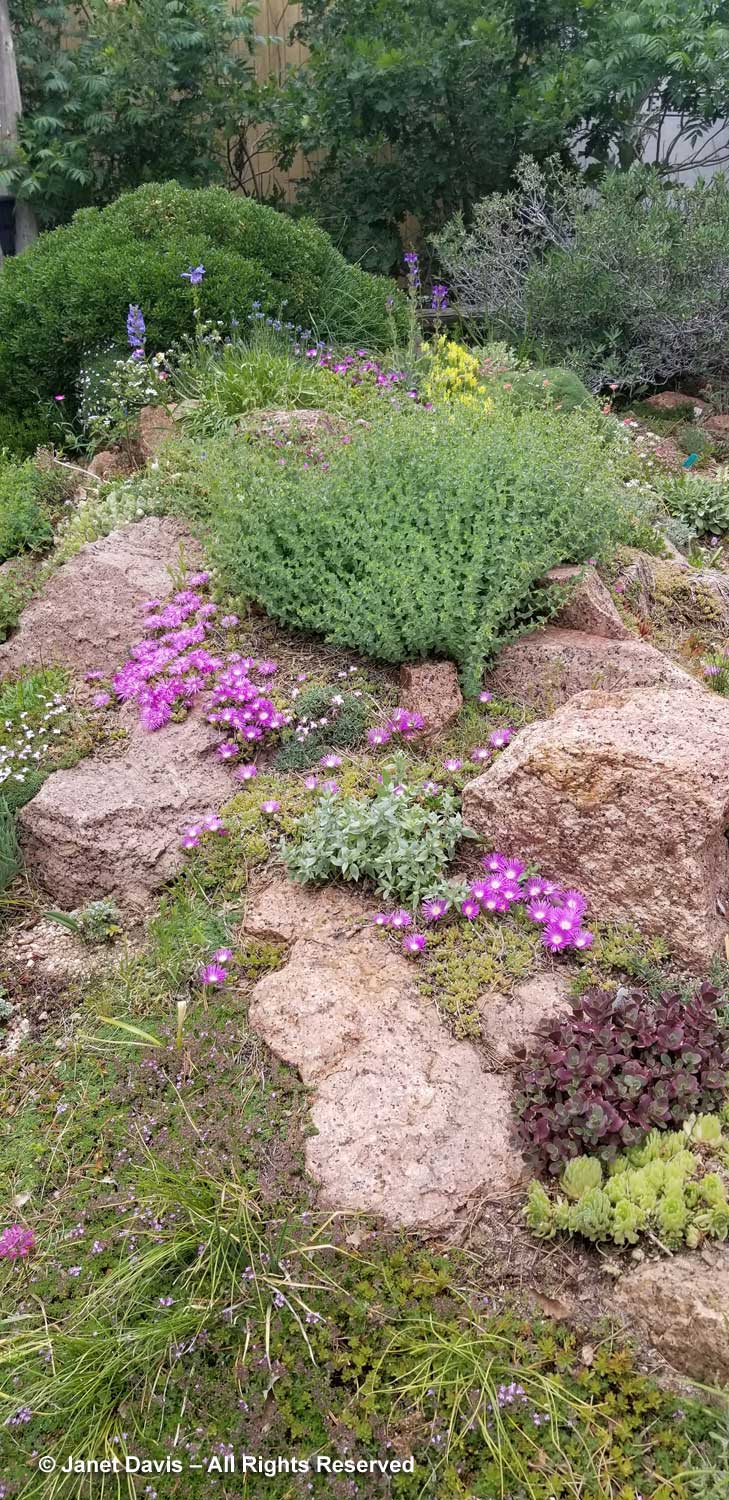
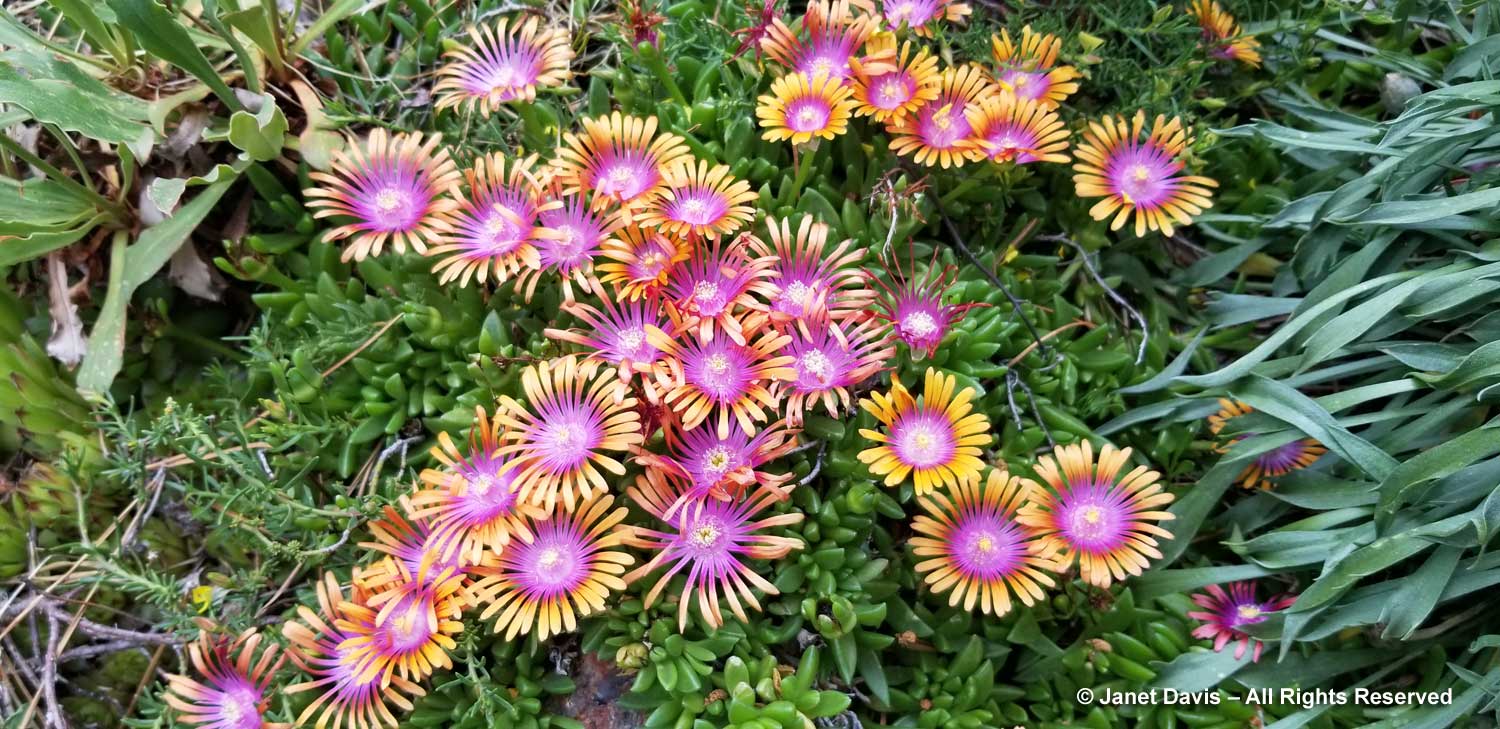
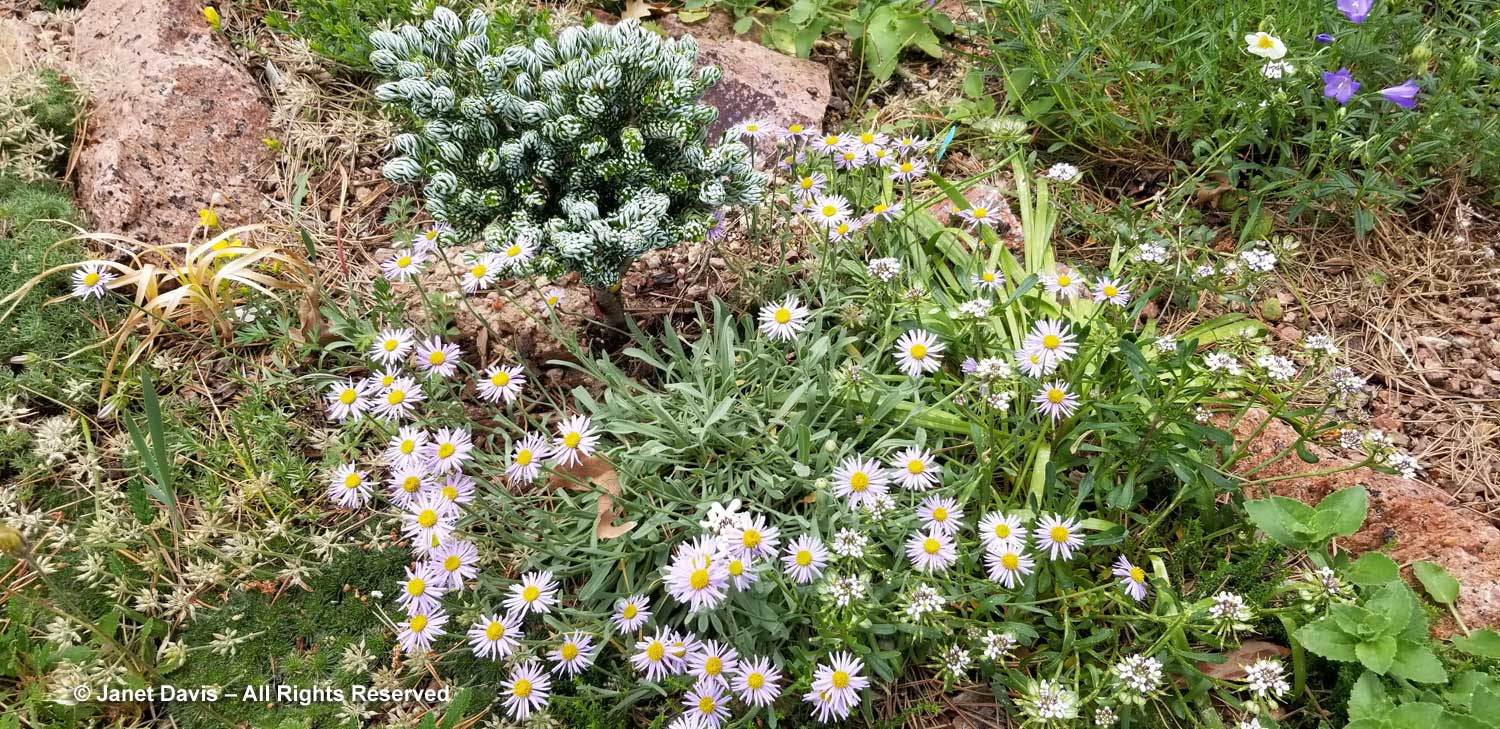
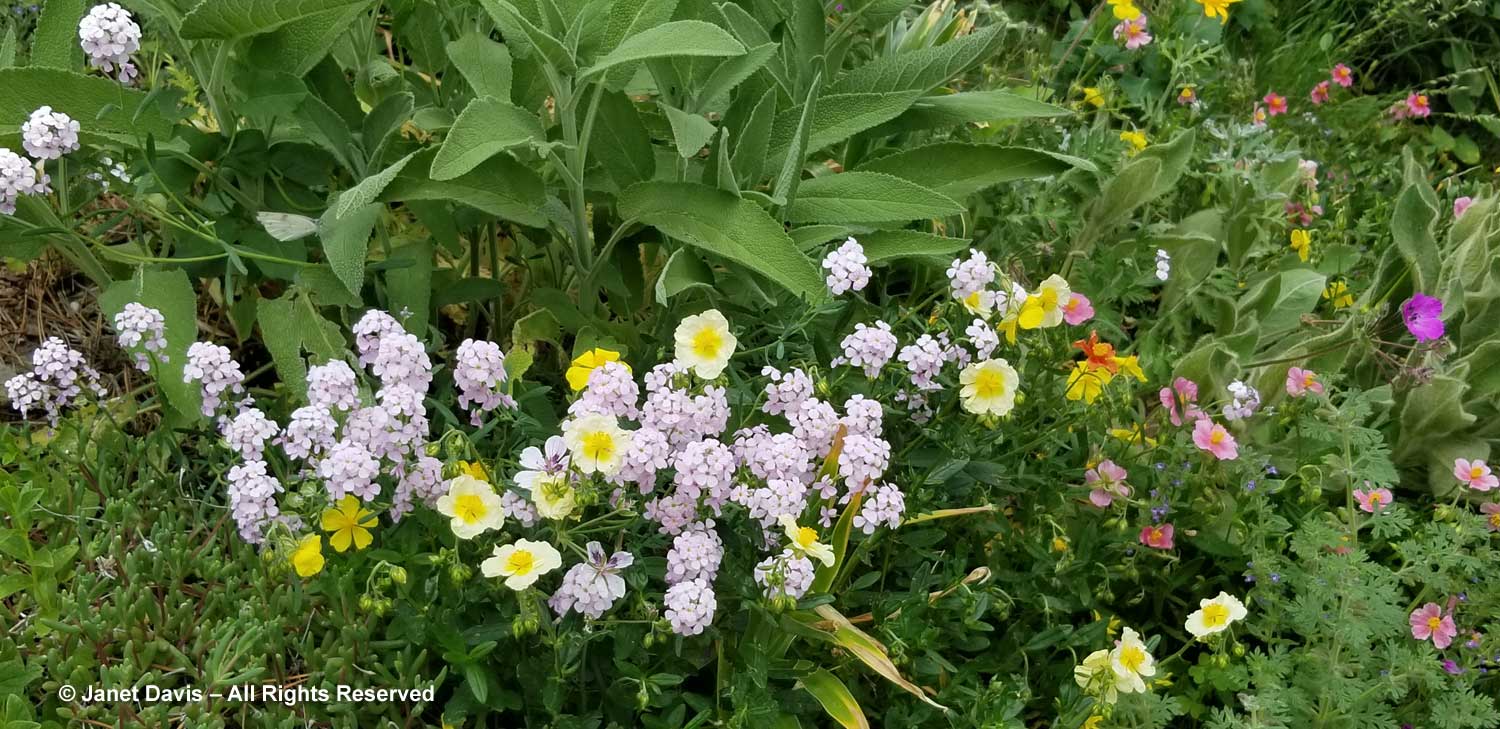
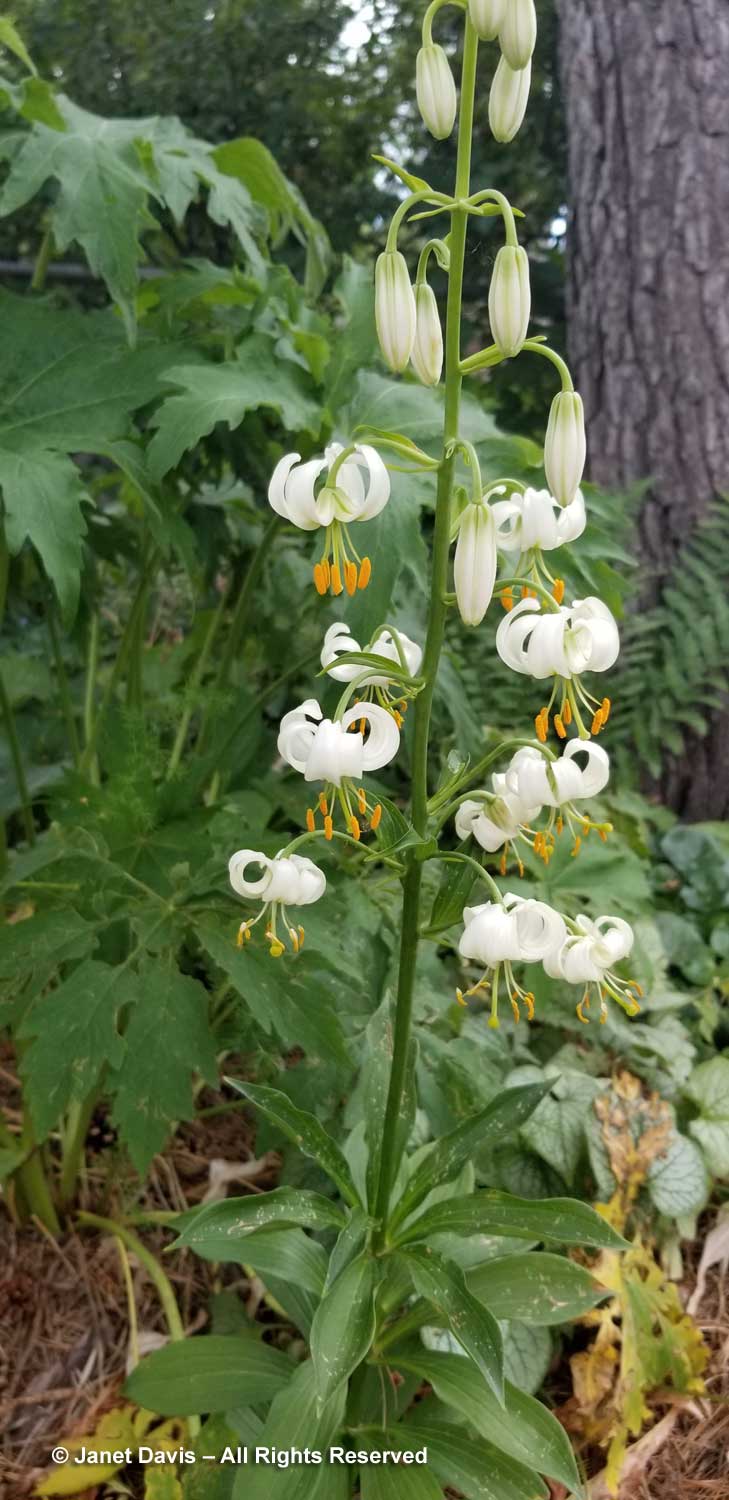
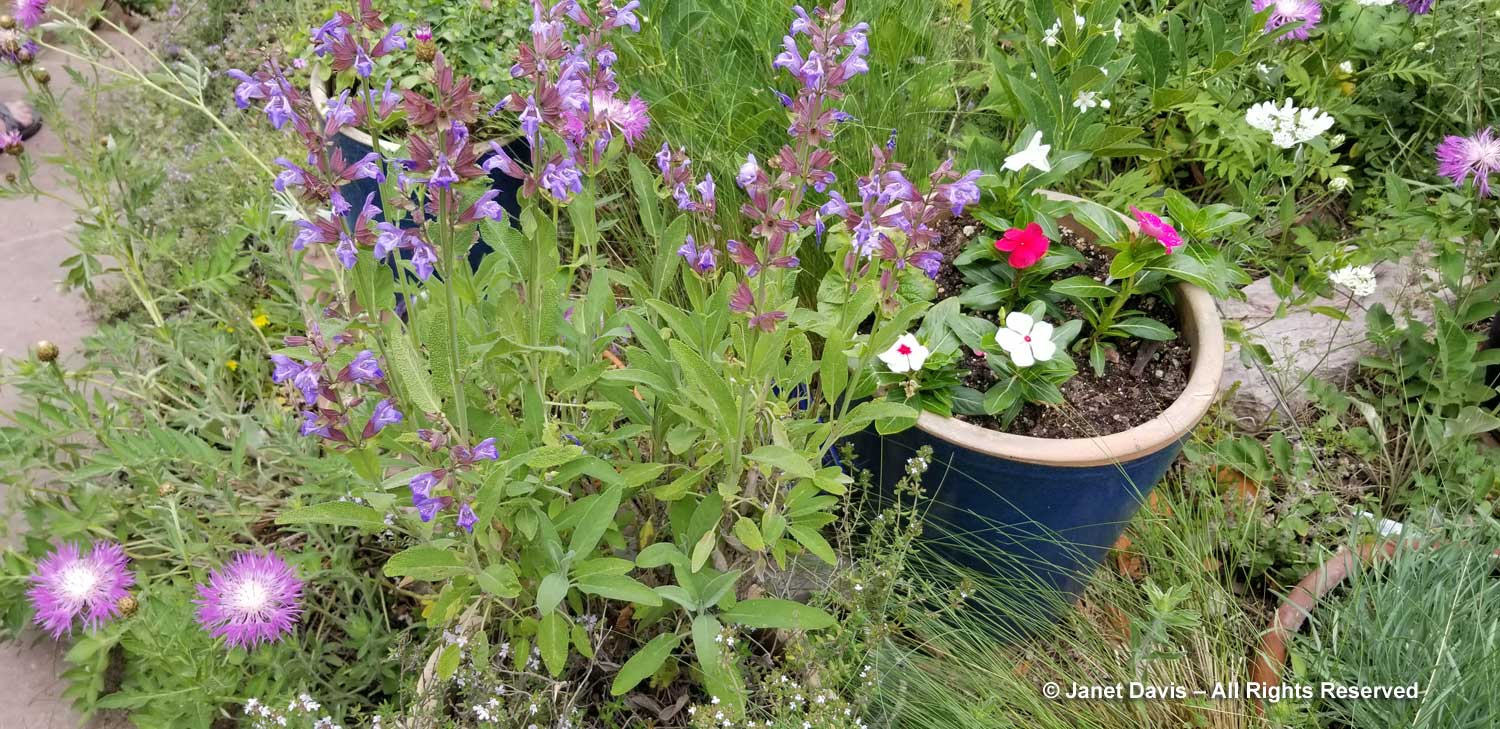
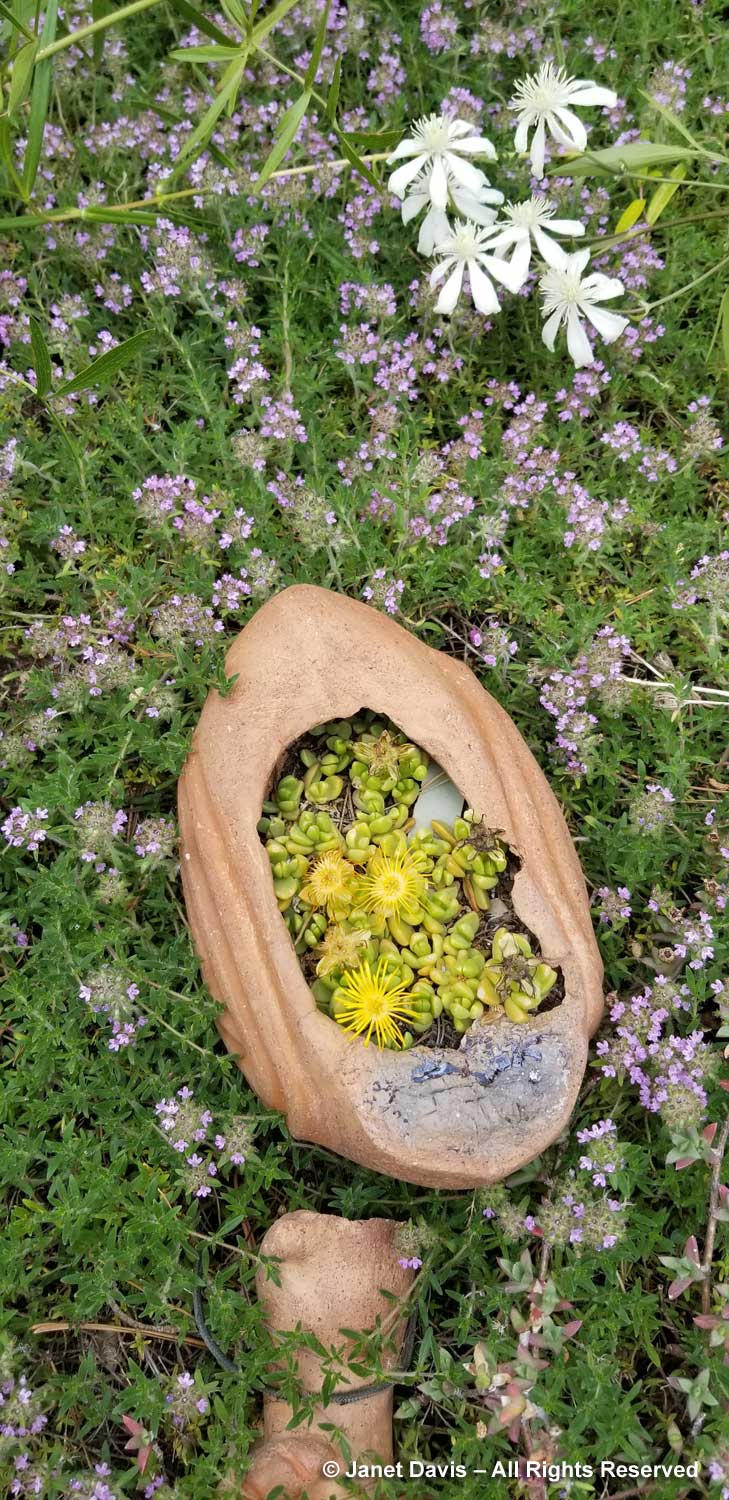
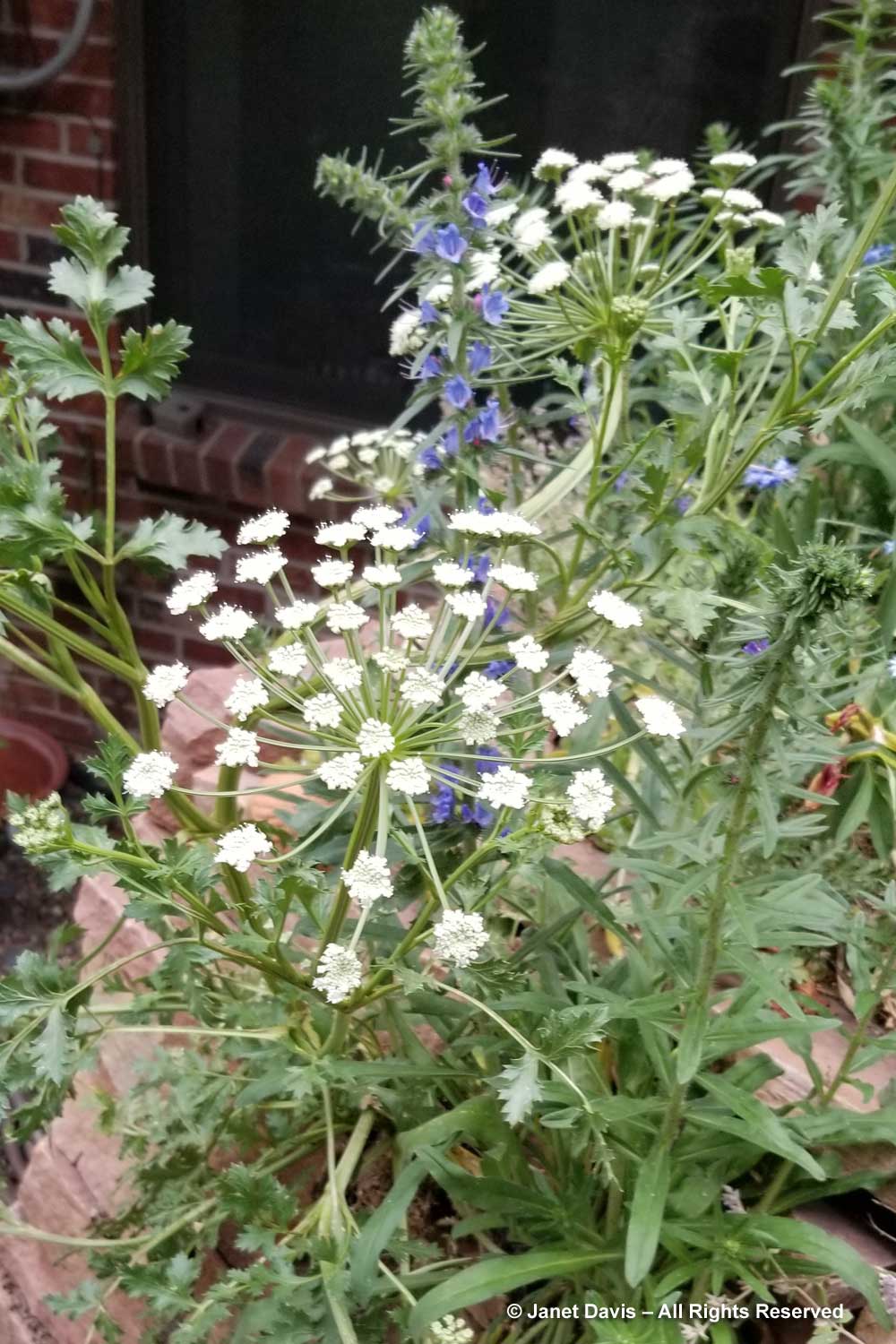
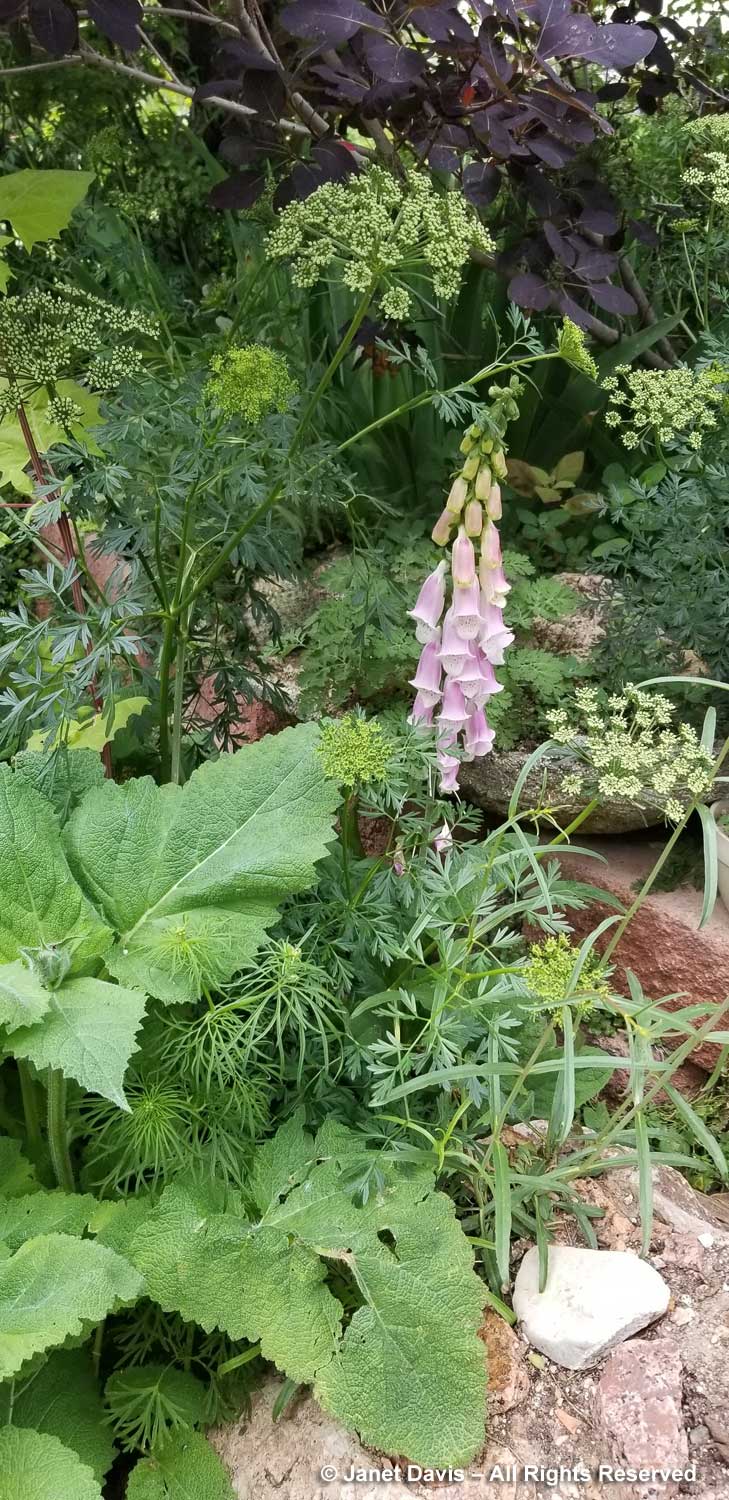
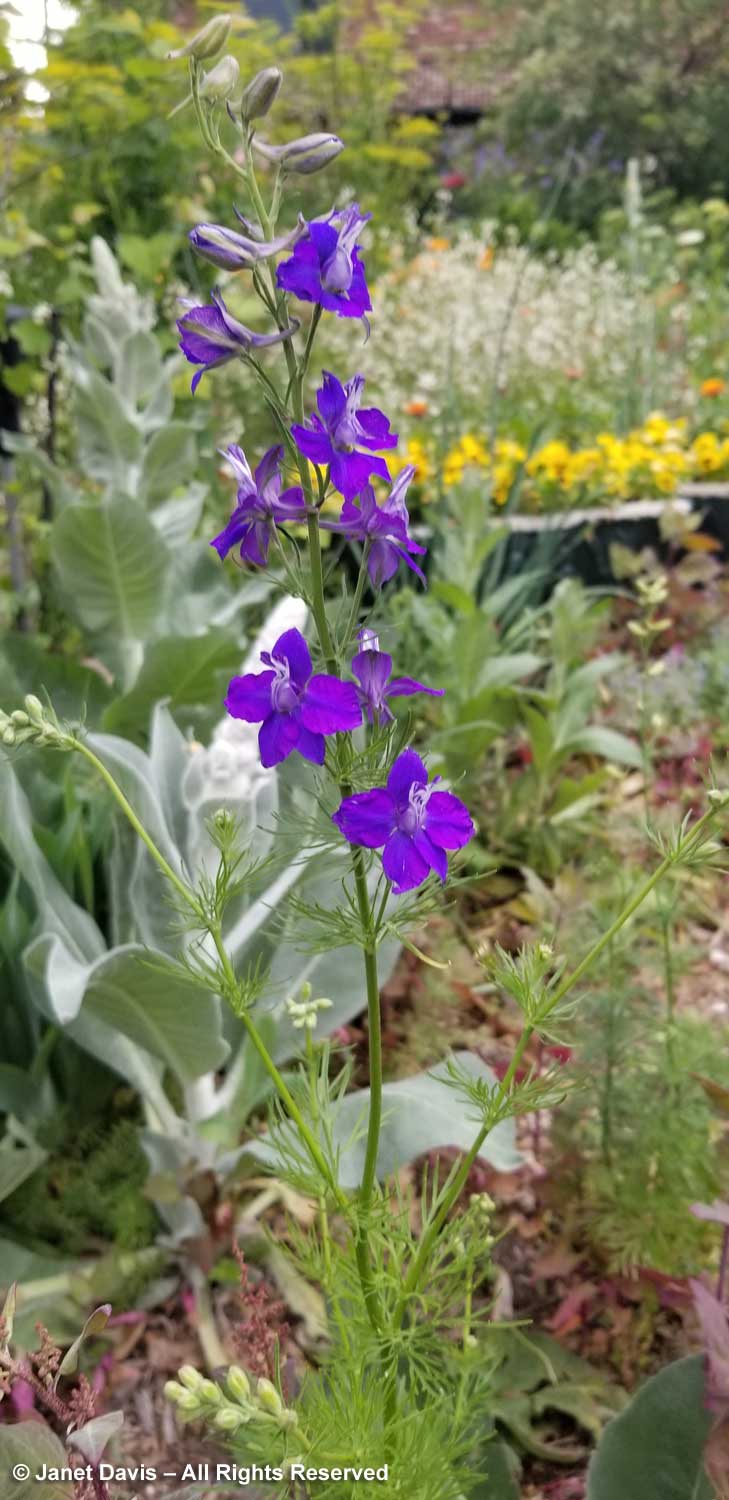
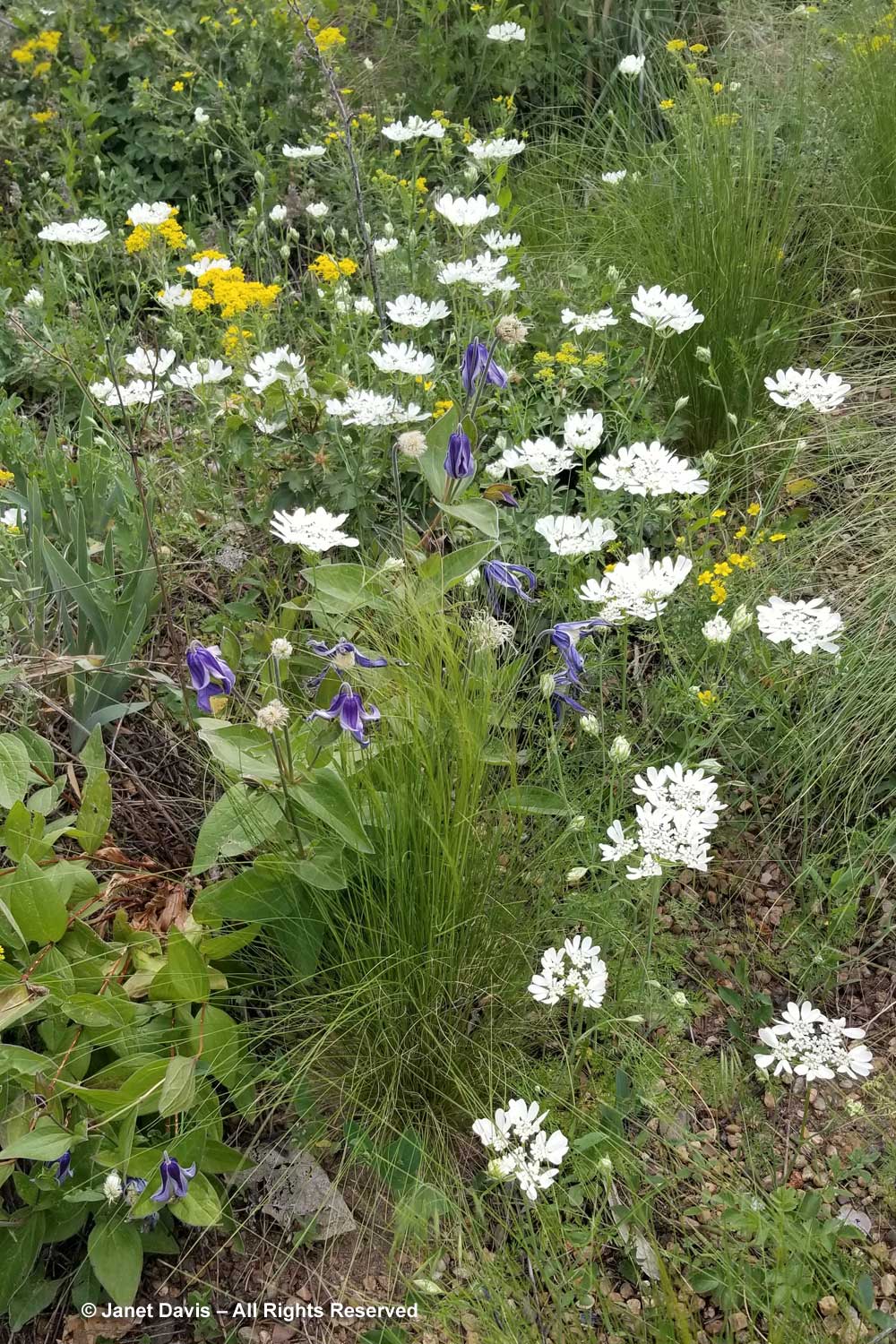
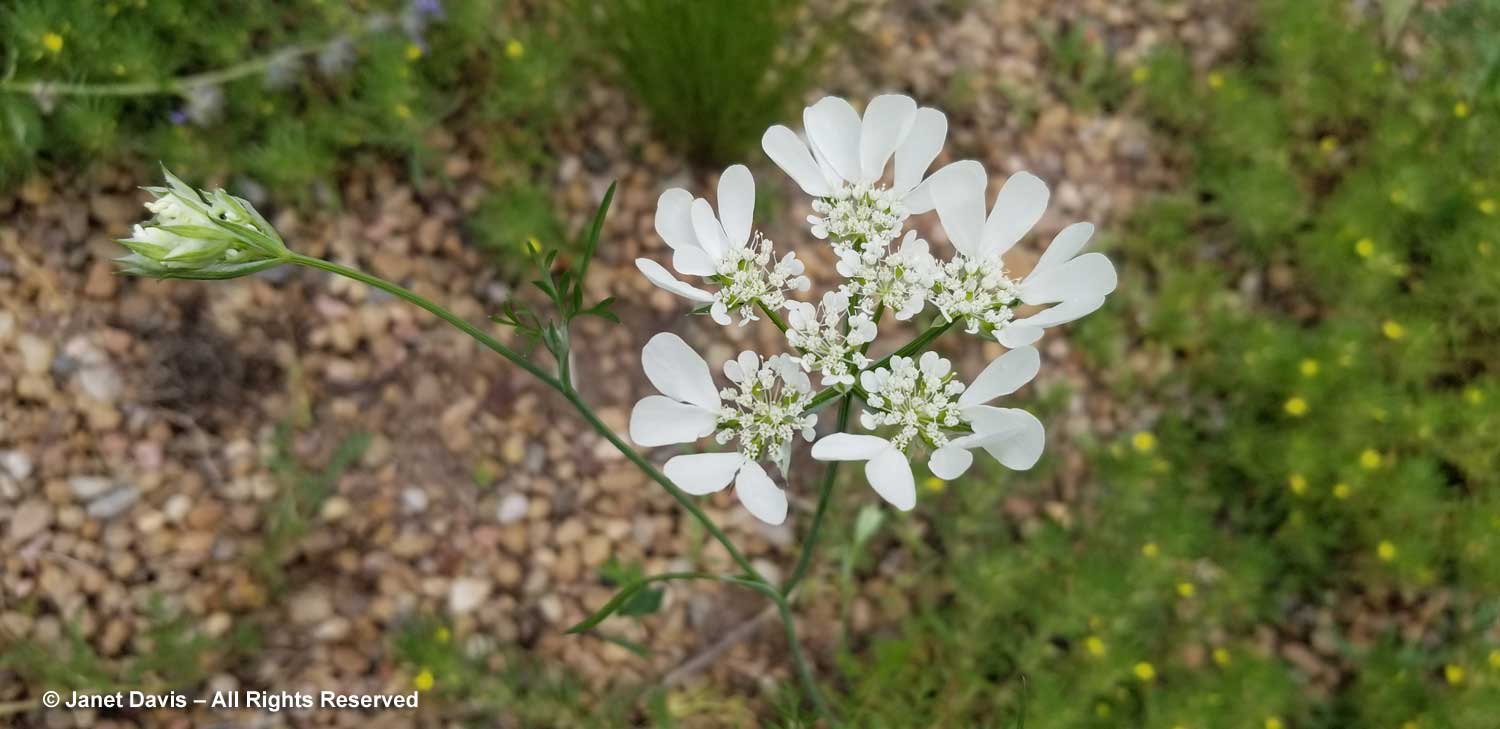
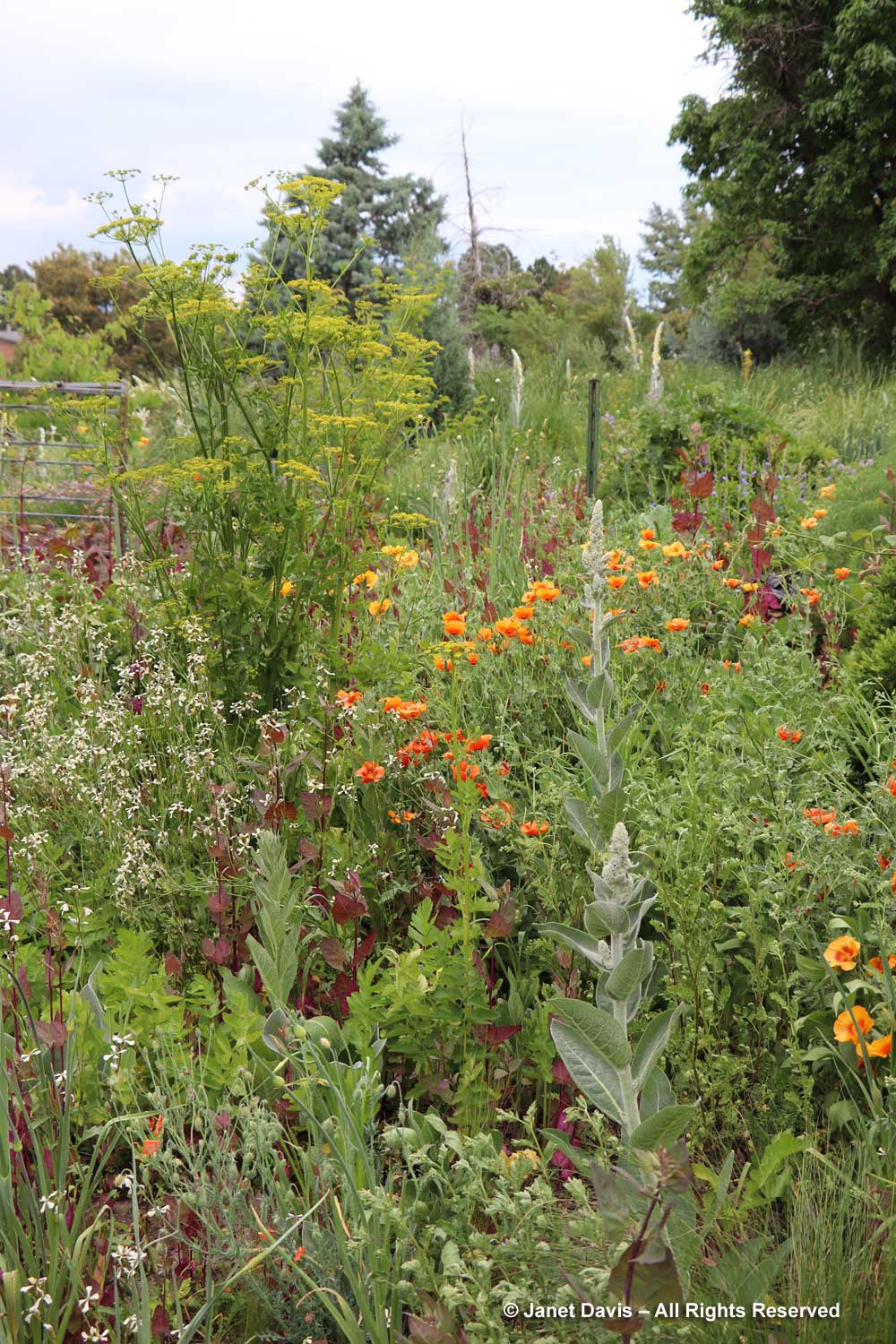
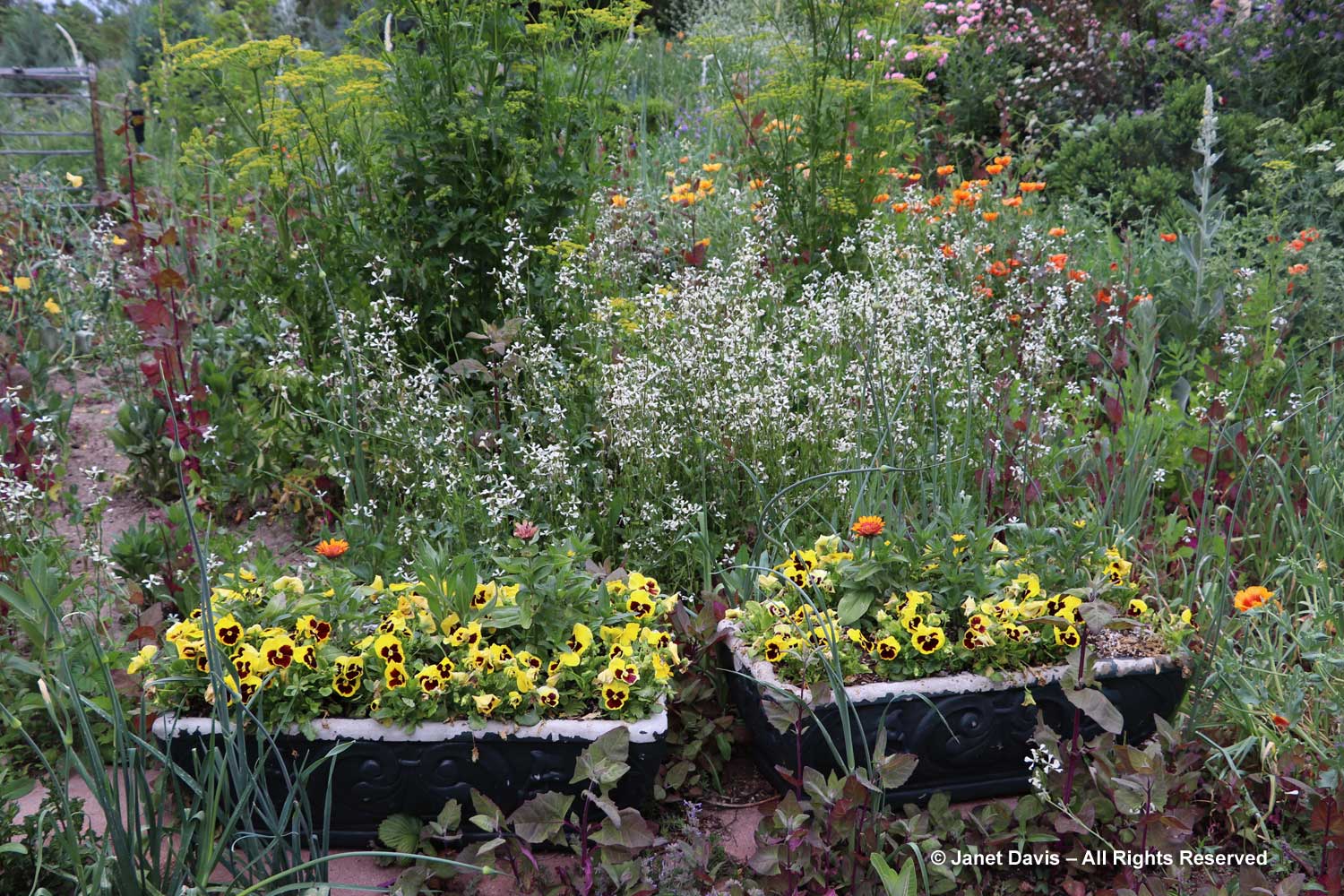
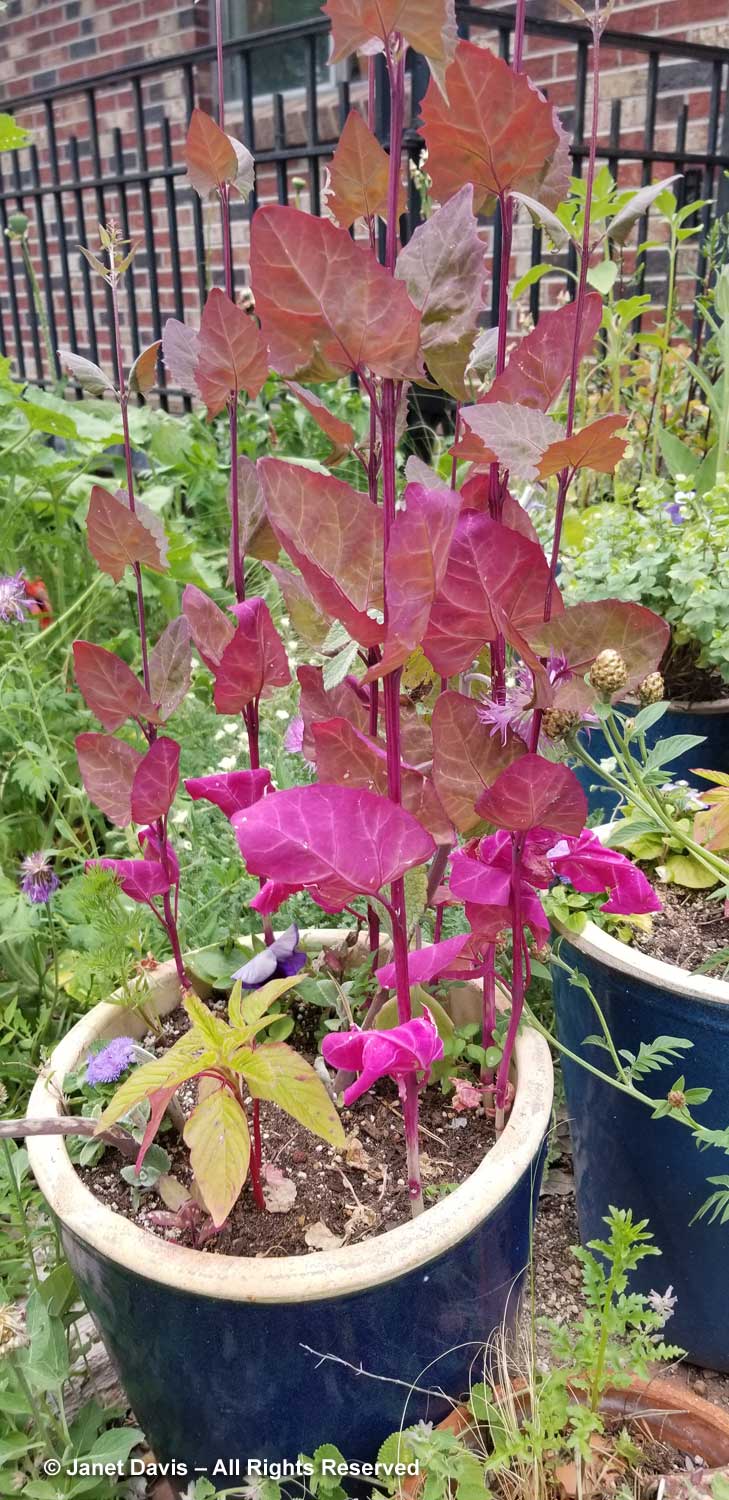
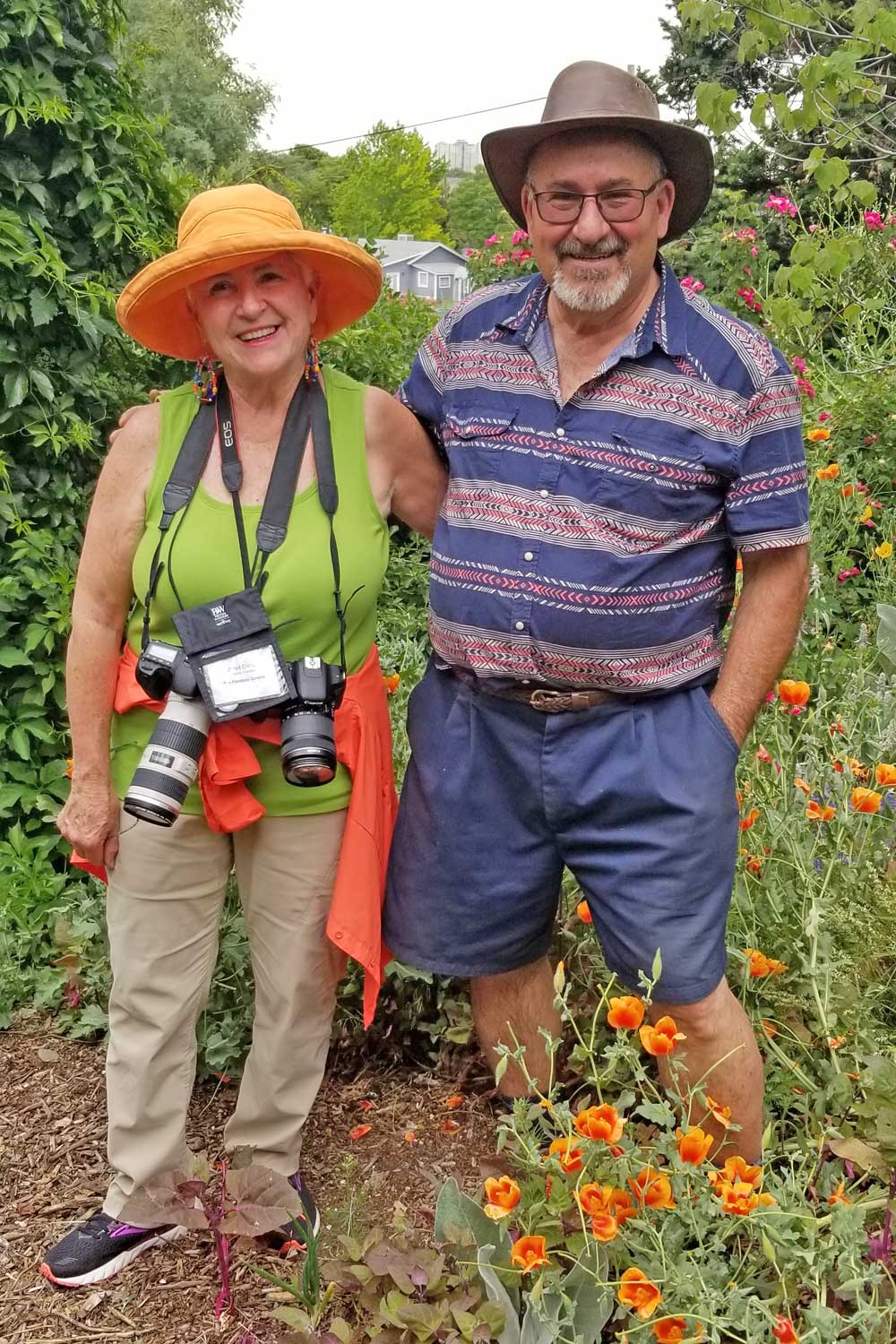


This is a wonderfully detailed and personal account of your tour through Panayoti’s garden, and I loved hearing about how you met him and toured with him in New Zealand. Seeing his garden was a highlight of the Fling for me too.
absolutely wonderful article, Janet. you and Panayoti both rock!!!!
Thanks so much Kristl! Only Panayoti, however, actually makes such beauty out of actual rock!
Thanks Kristl! You would love his garden.
Fantastic post, Janet. Love all you write about Panayoti and your personal connection. I am thankful for your insights & photos of his garden–everything here is more comprehensive than I could catch (in any way) because our bus was just too crowded. Next time I SURELY must go for that.
Thanks so much Alyse. I made a point of rushing through Panayoti’s garden with my finger on the shutter, given our very short time there. I knew it would be full of riches to recall later, even if I didn’t know the name of most of his plants.
Great post! Lots of detailed observations and history. I’m struck how plants from some of the drier portions of the garden are the same ones I use here in N. California – are or endemic. Verbascum works well here, Opuntia’s, Salvia and of course poppies all survive with a minimum of water – tho they look better with a bit of water 🙂 Also – I agree with your last thought about having your own garden to come back to after exploring the work of others.
Thank you Hans! It’s a great garden for experimentation. And collecting, of course!
Beautiful photos Janet, and the personal memories make the visit all the richer.
Loree… thank you! You would have loved his garden. It was FULL of dangerous, prickly plants!
Lucky you getting to traipse around looking at plants with Panayoti. Fun to see his garden through your eyes.
Thanks, Lisa. It was such fun to be in his garden, which I knew would be filled with treasures – I just didn’t know how many!
It was so funny to see the “weedy” orach in Denver, a plant I continually try to encourage reseeding in my garden here in Los Angeles. Altitude, cold winters, is that the key? Verbascum has been shy to reseed too. Glaucium, however, seems to like it here. Loved this in-depth post, the photos, and learning of all your associations with PK. It was a pleasure to chat with you, and I look forward to hearing about your recent trip to Greece.
Thanks so much Denise. Sorry this is so after the fact. I have to work on my spam filter….🙄